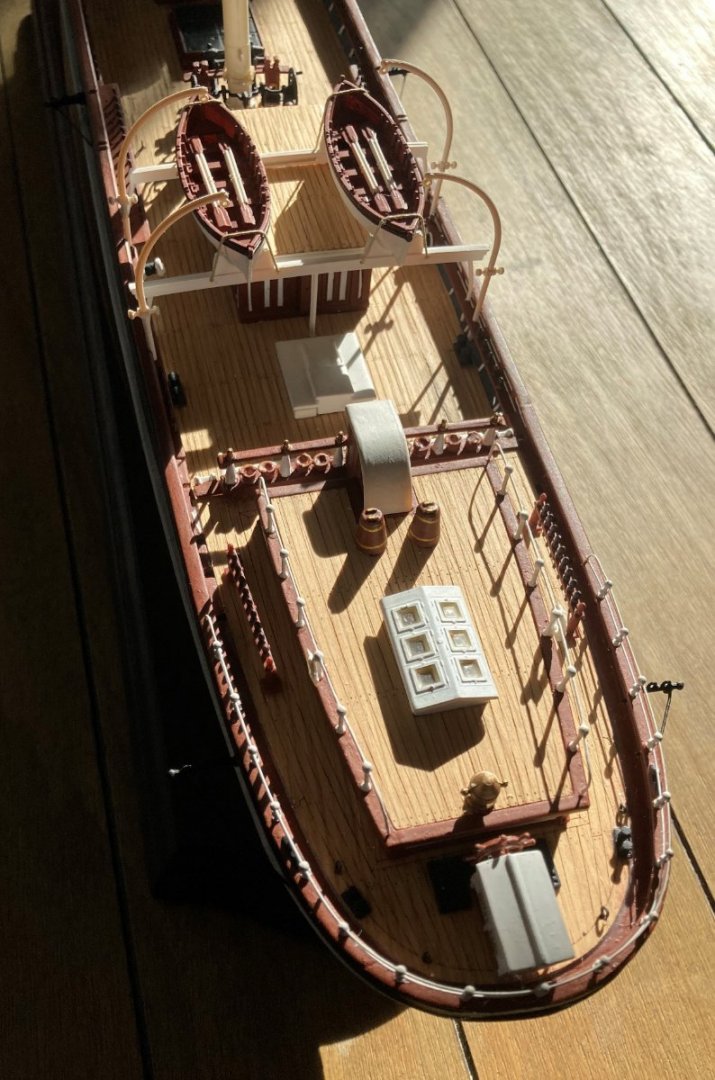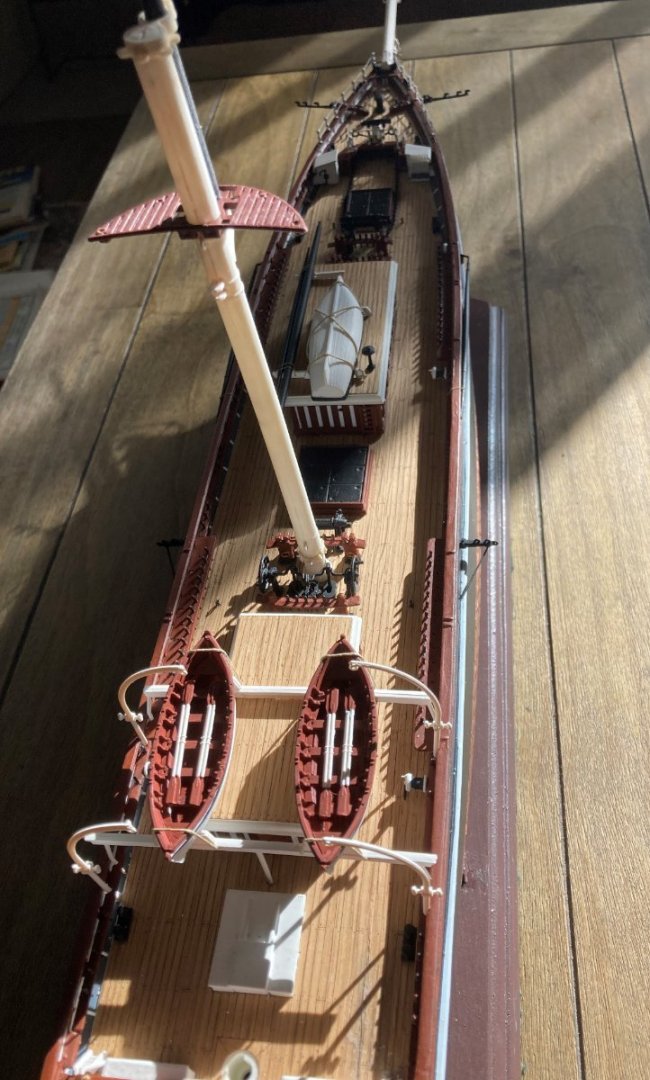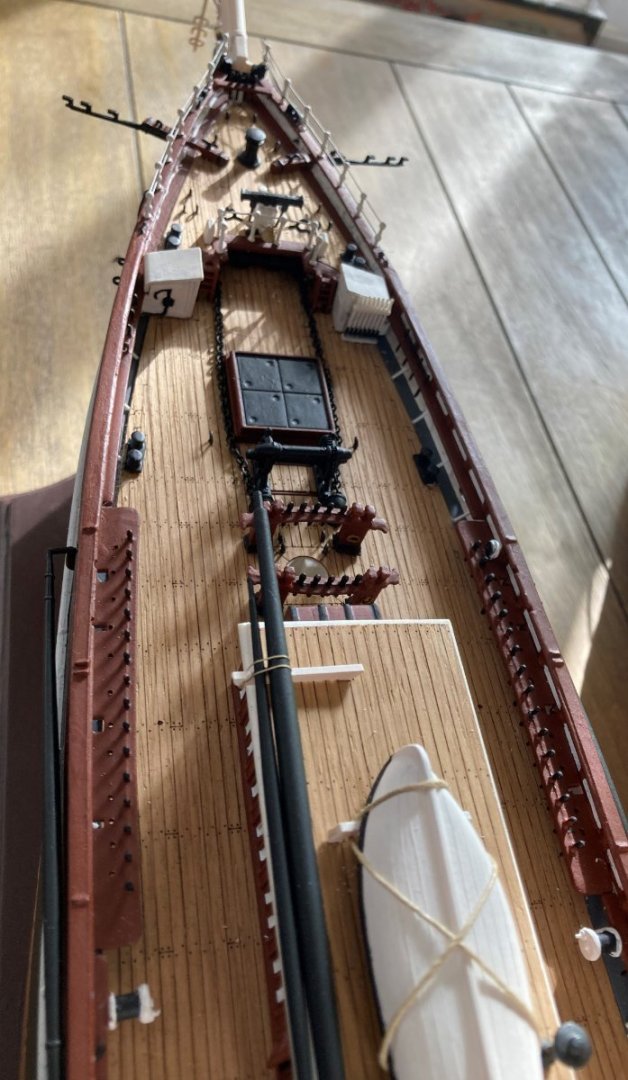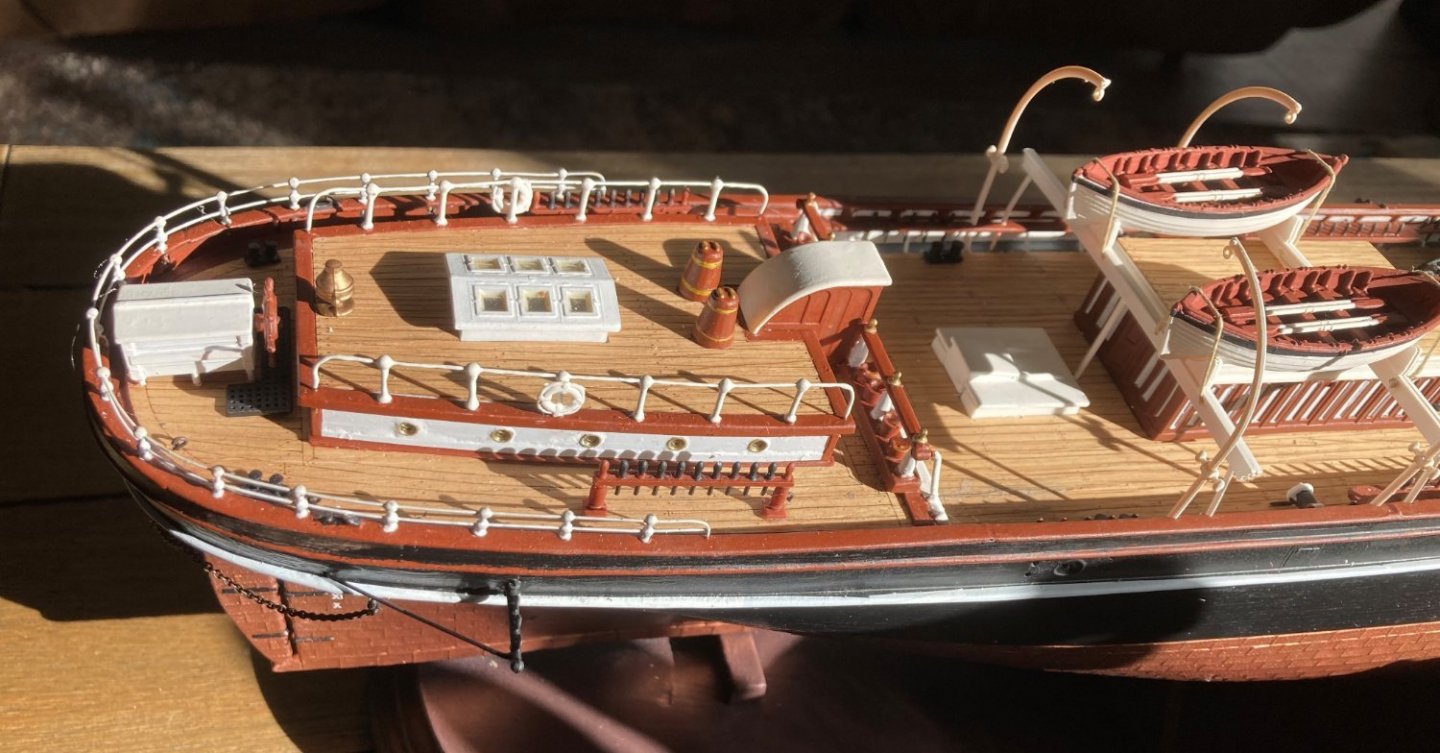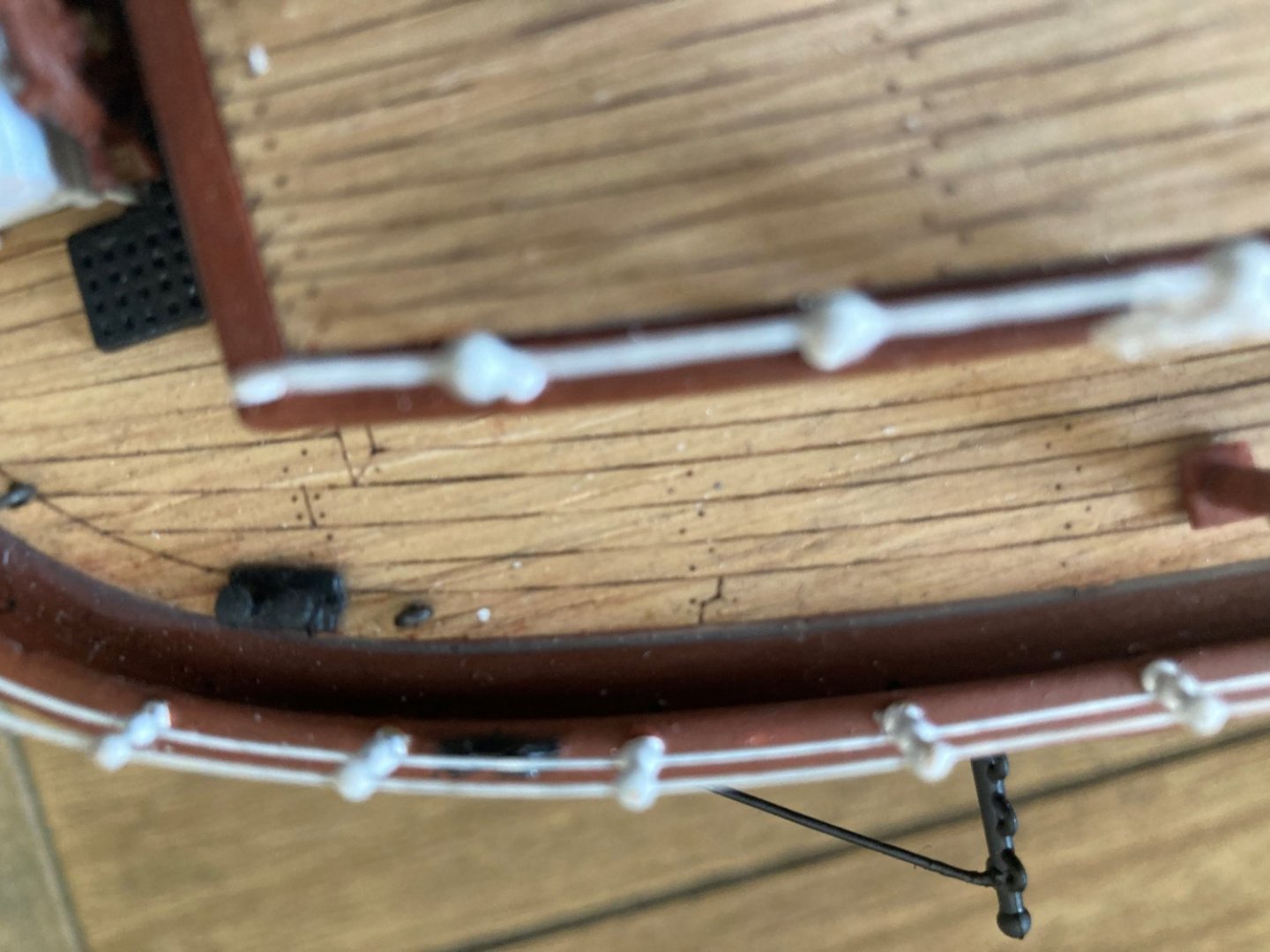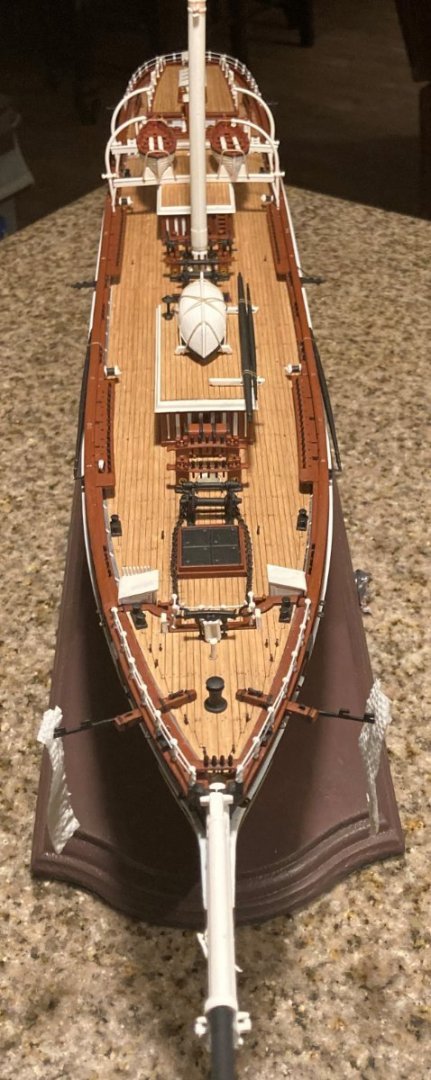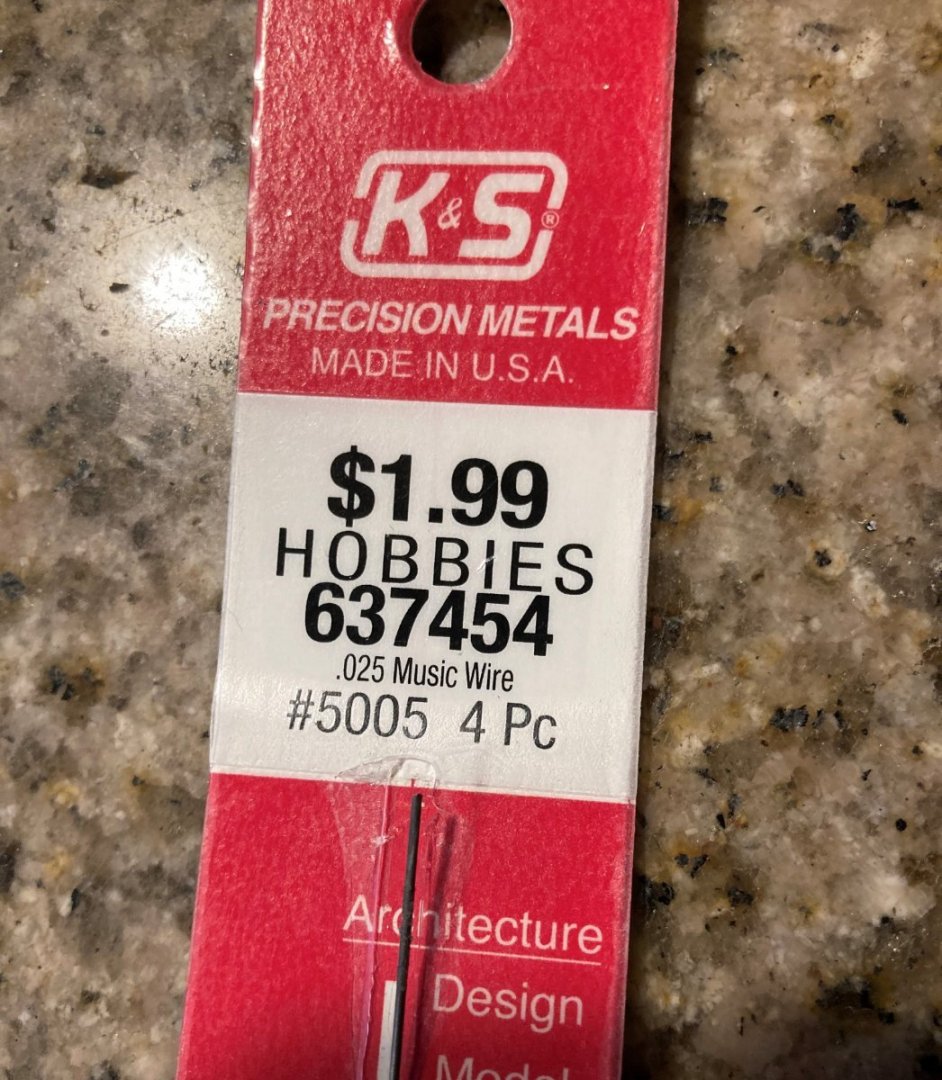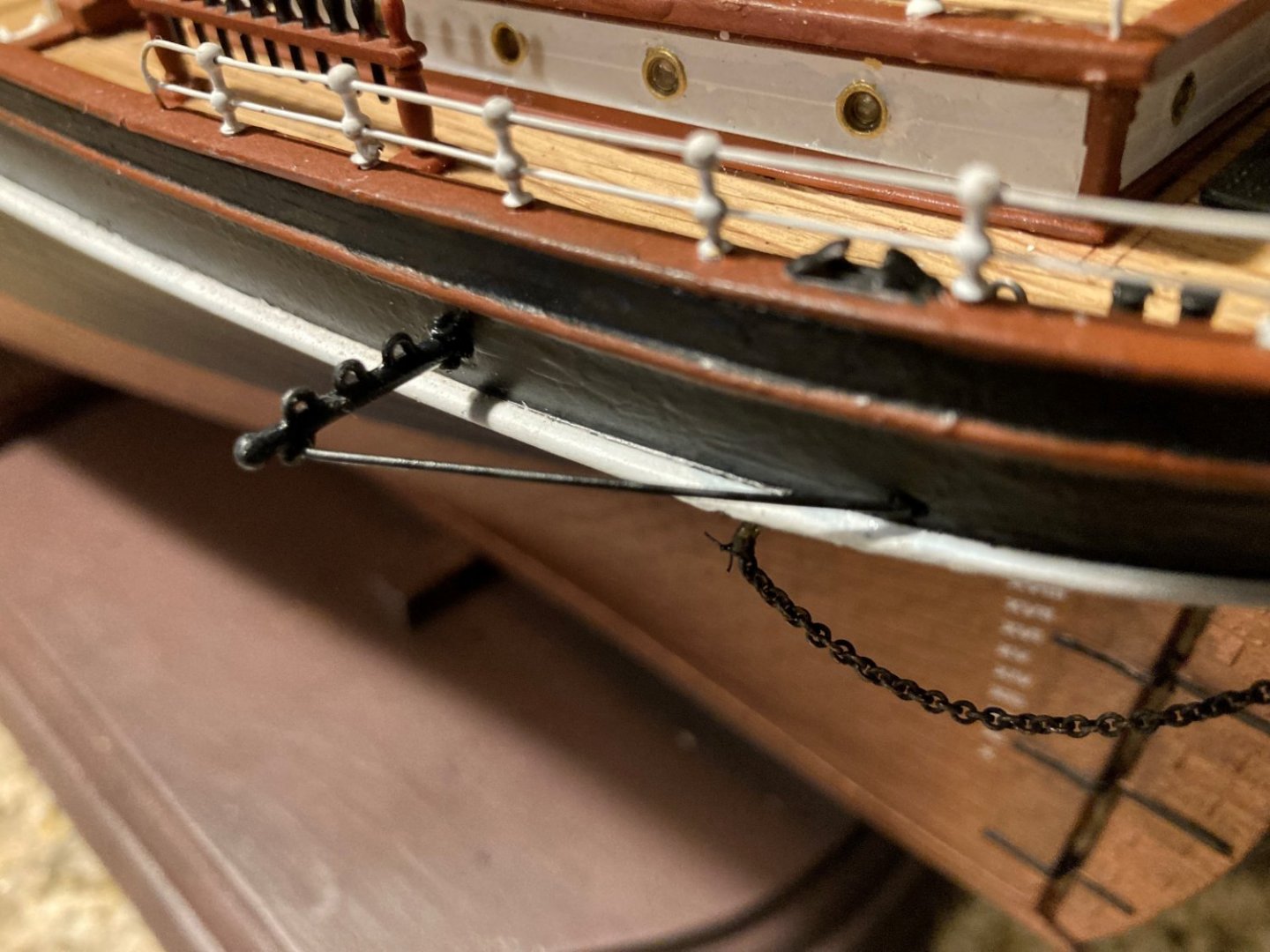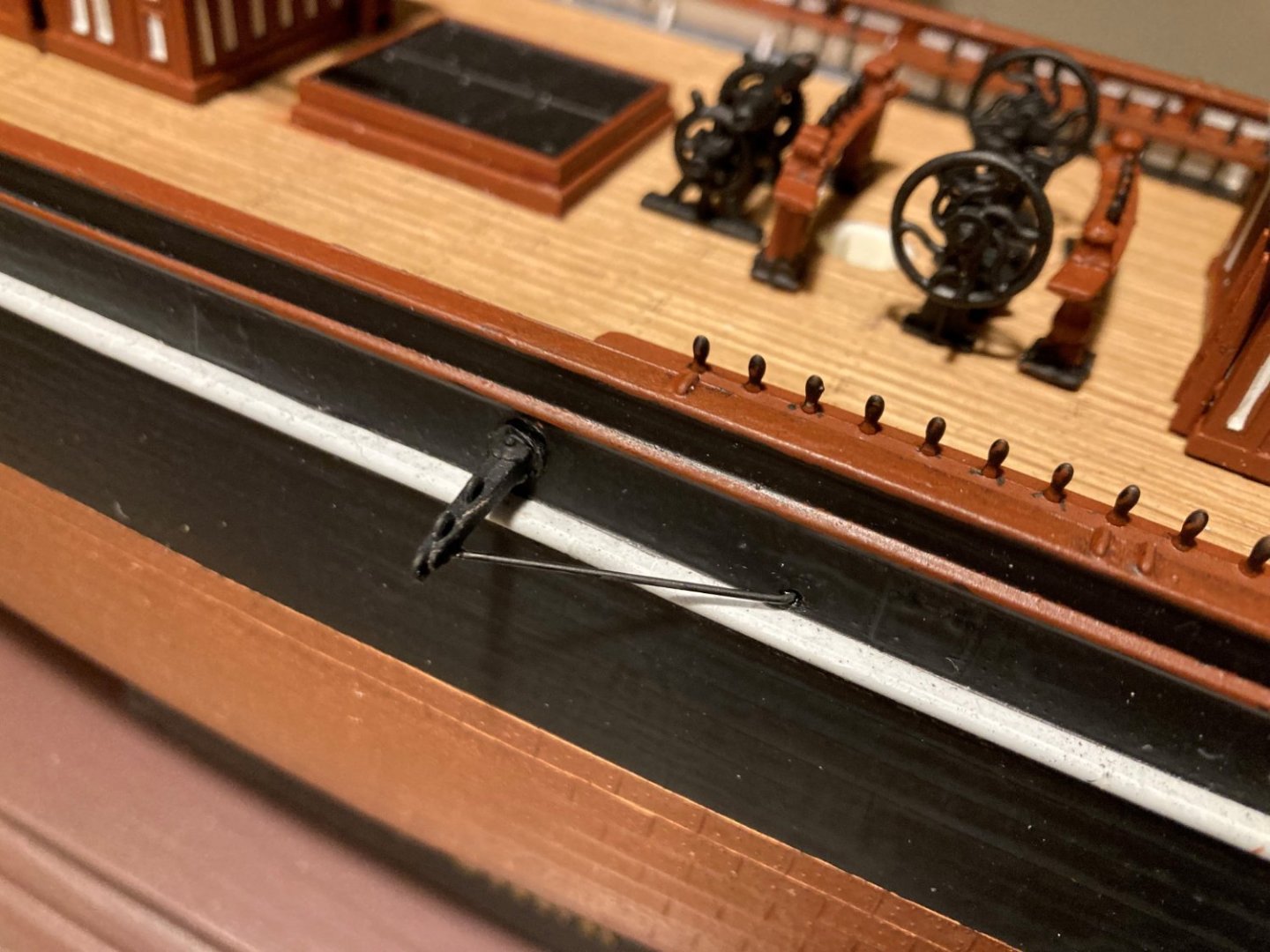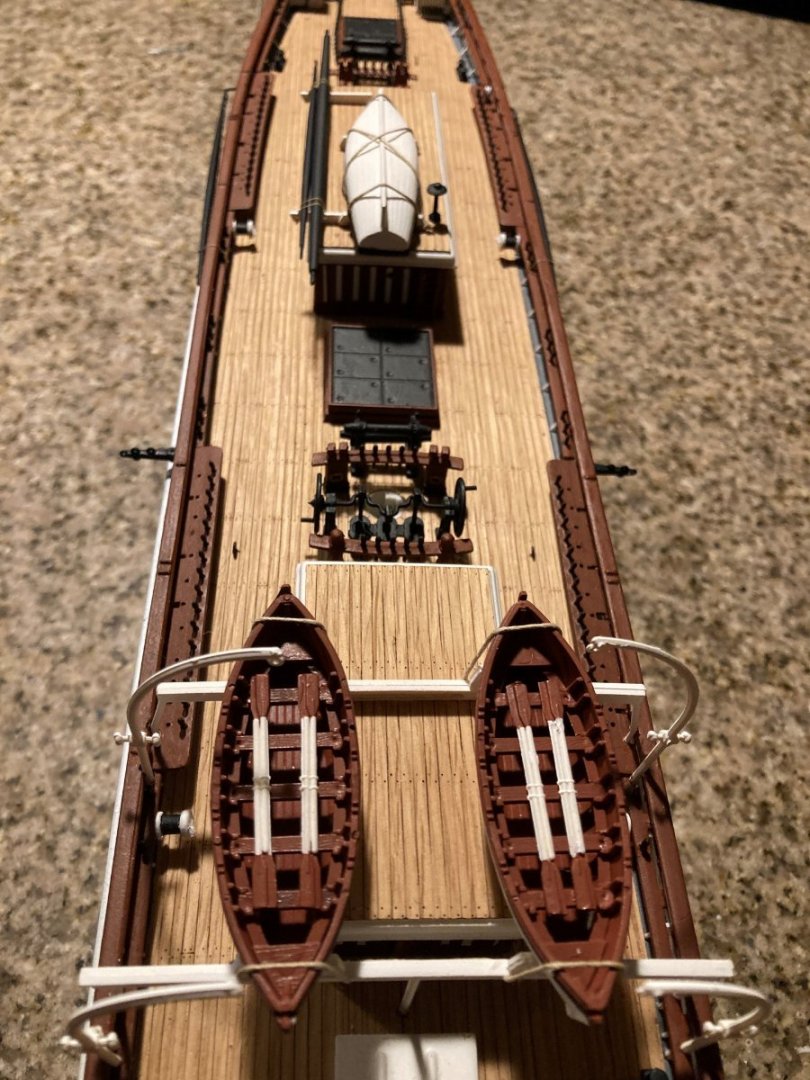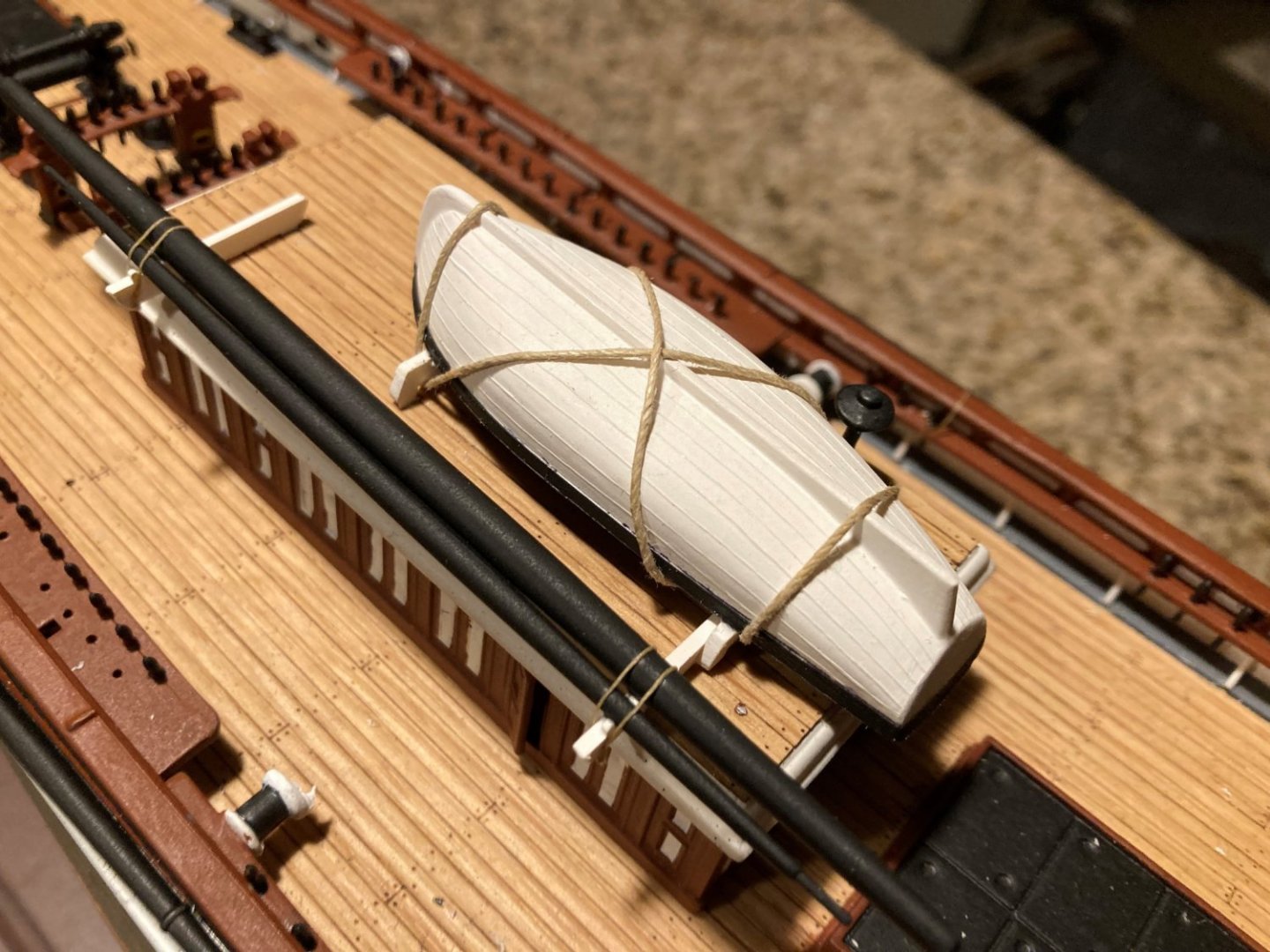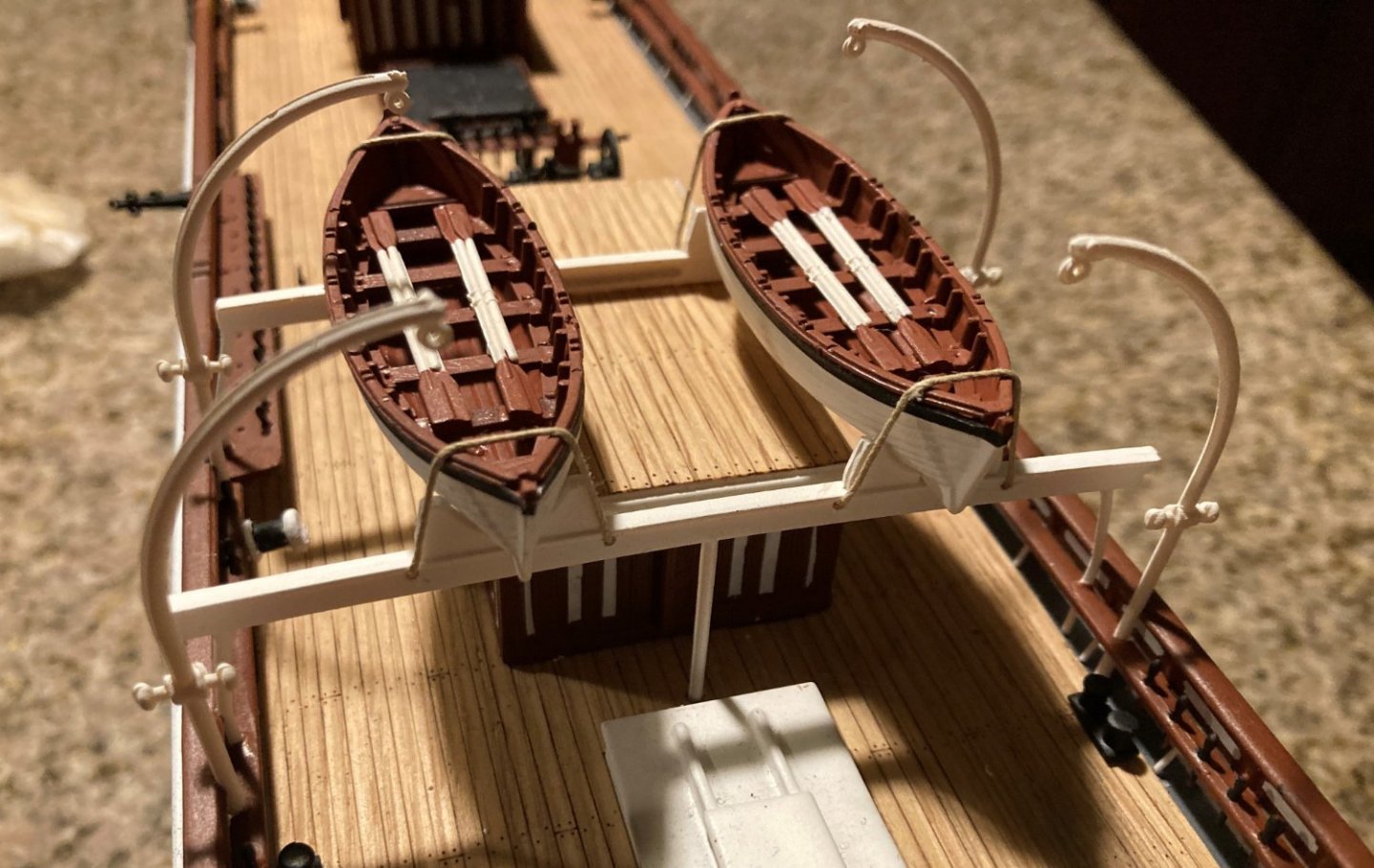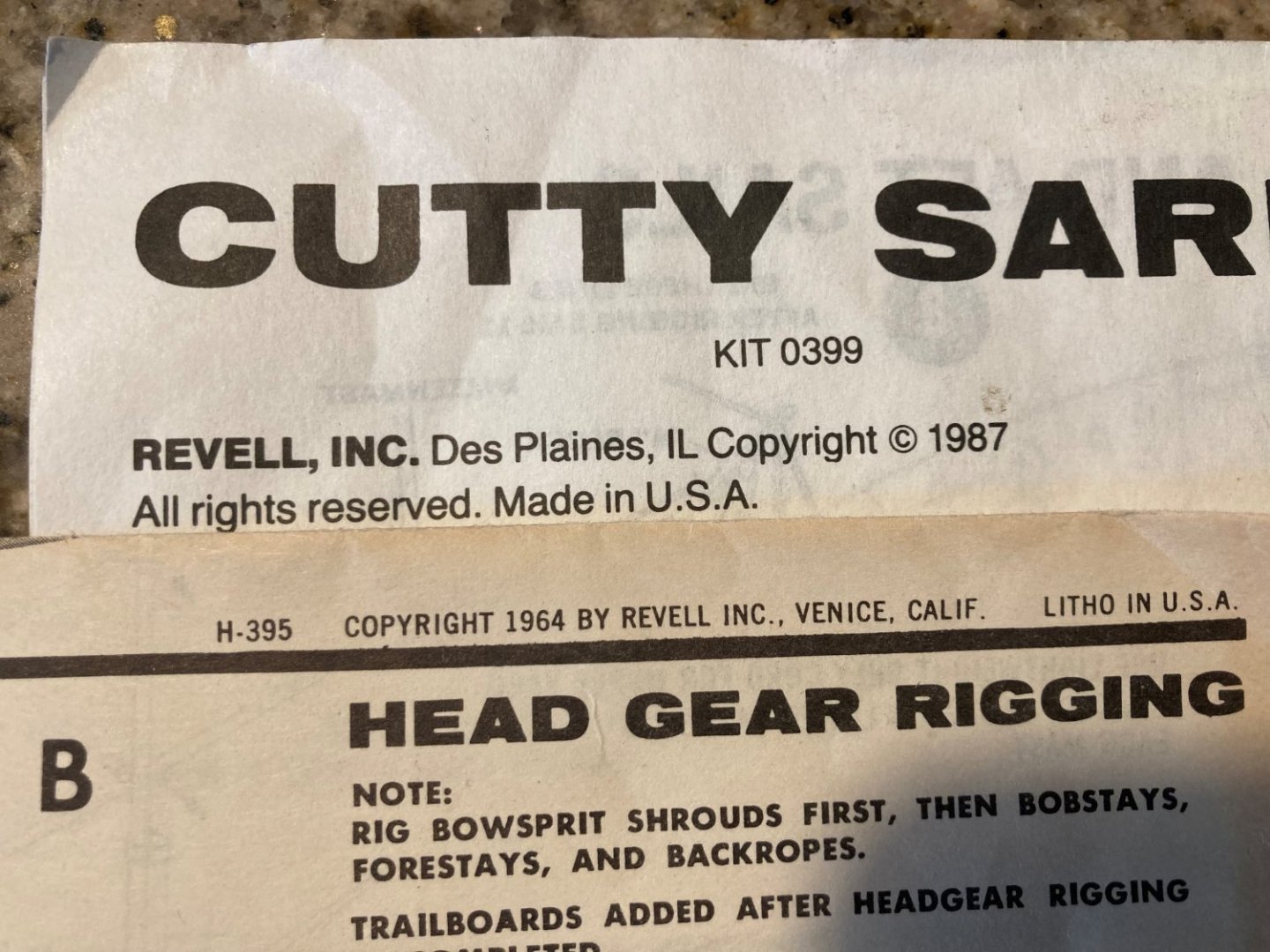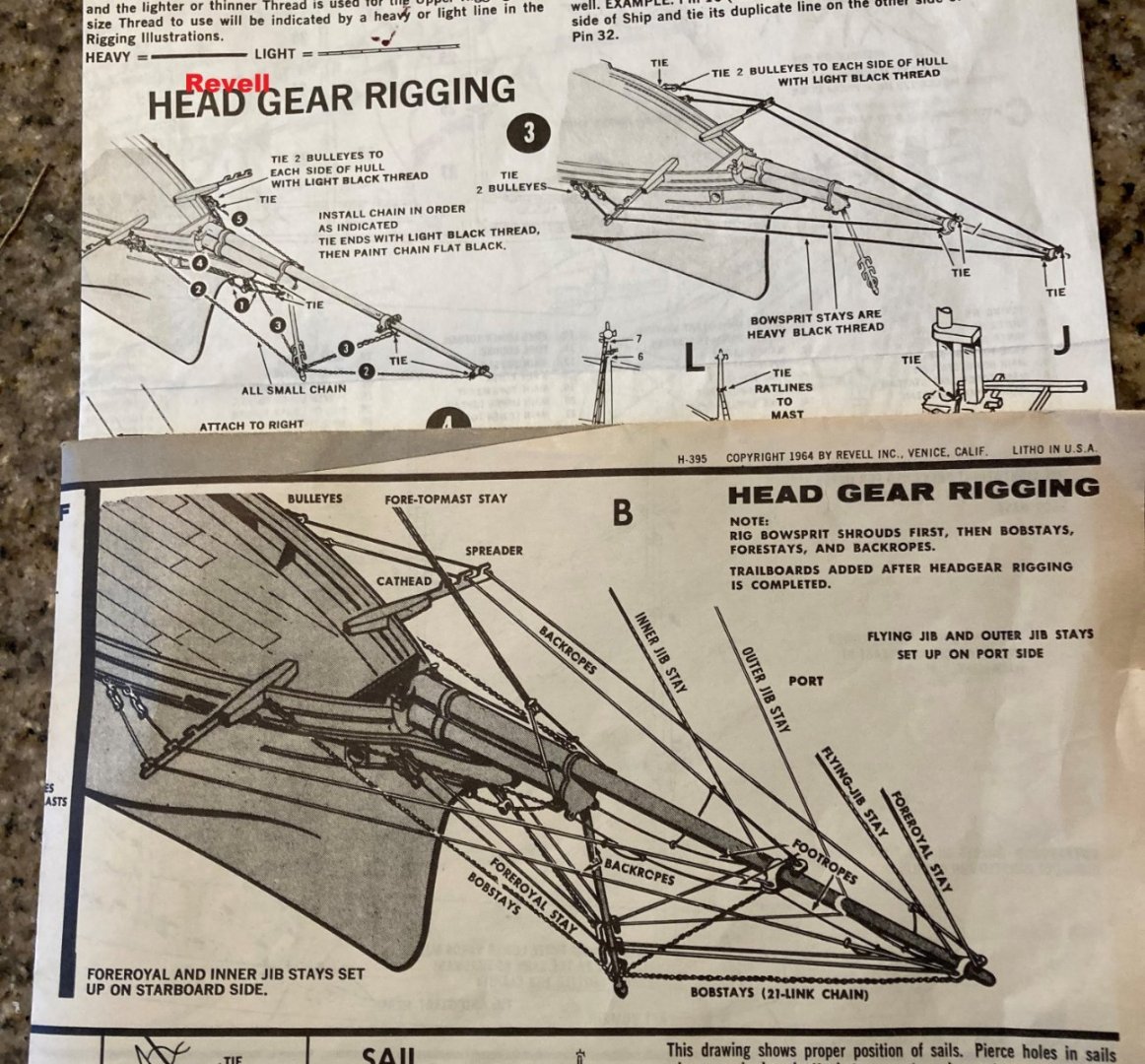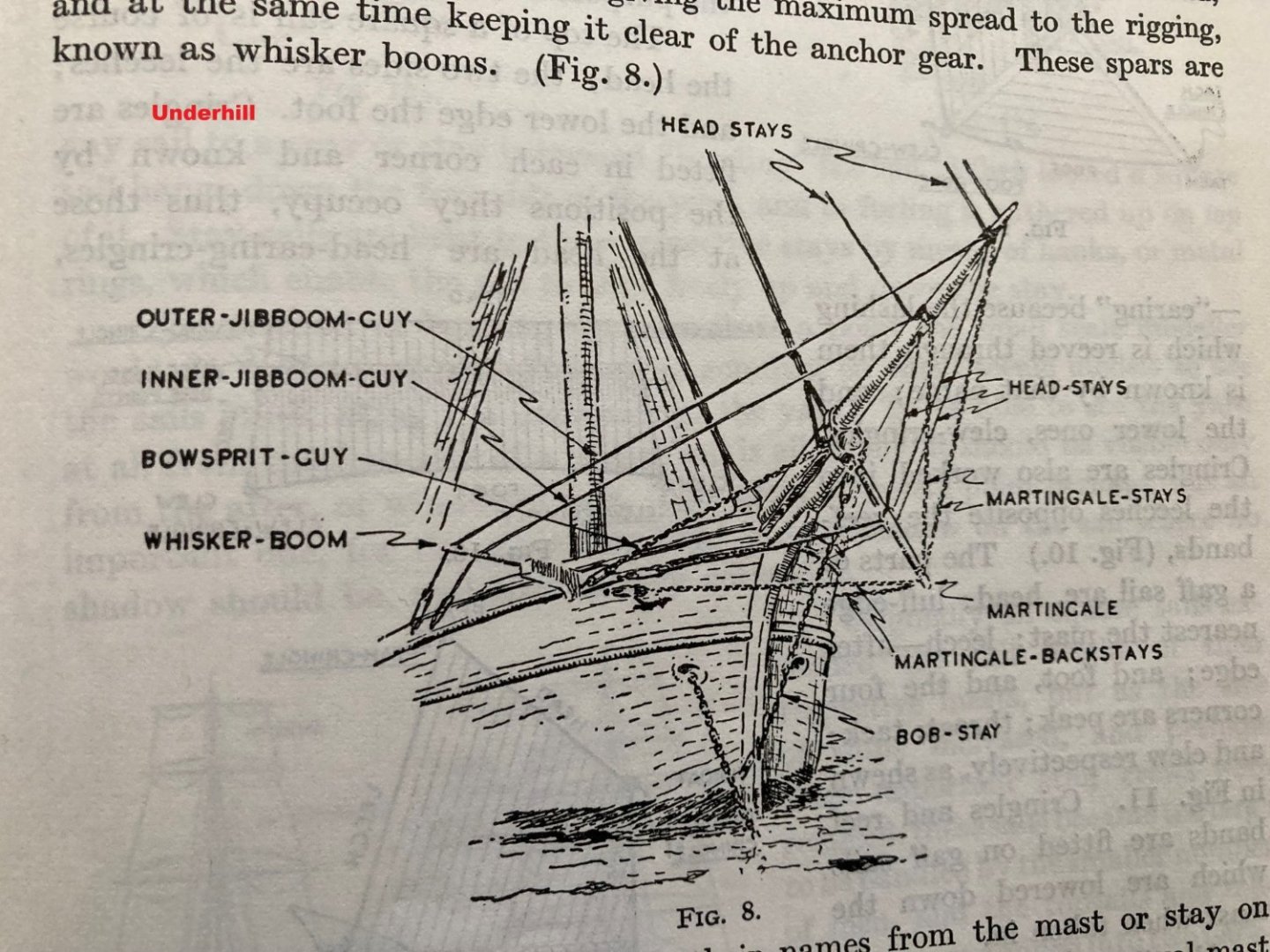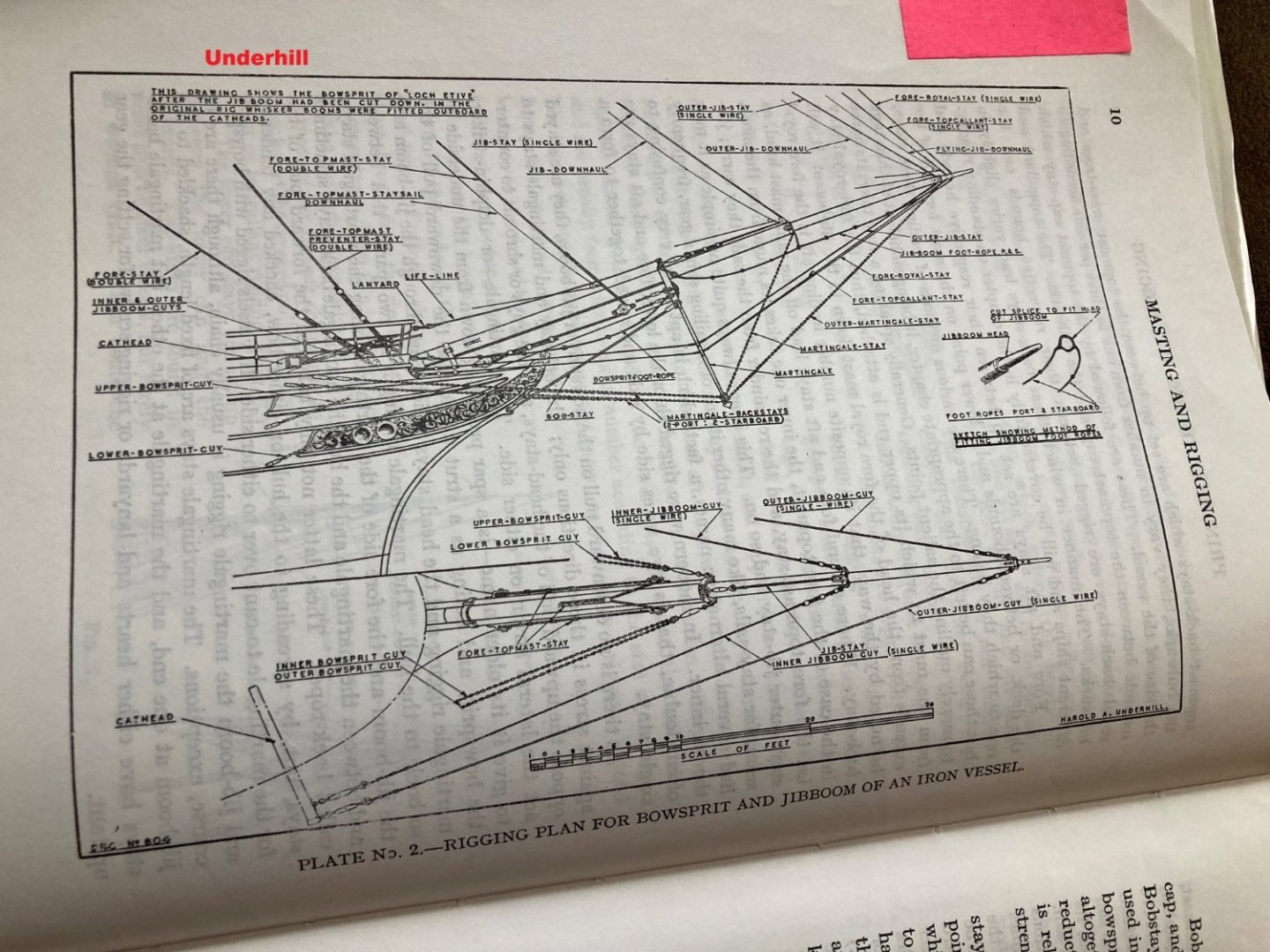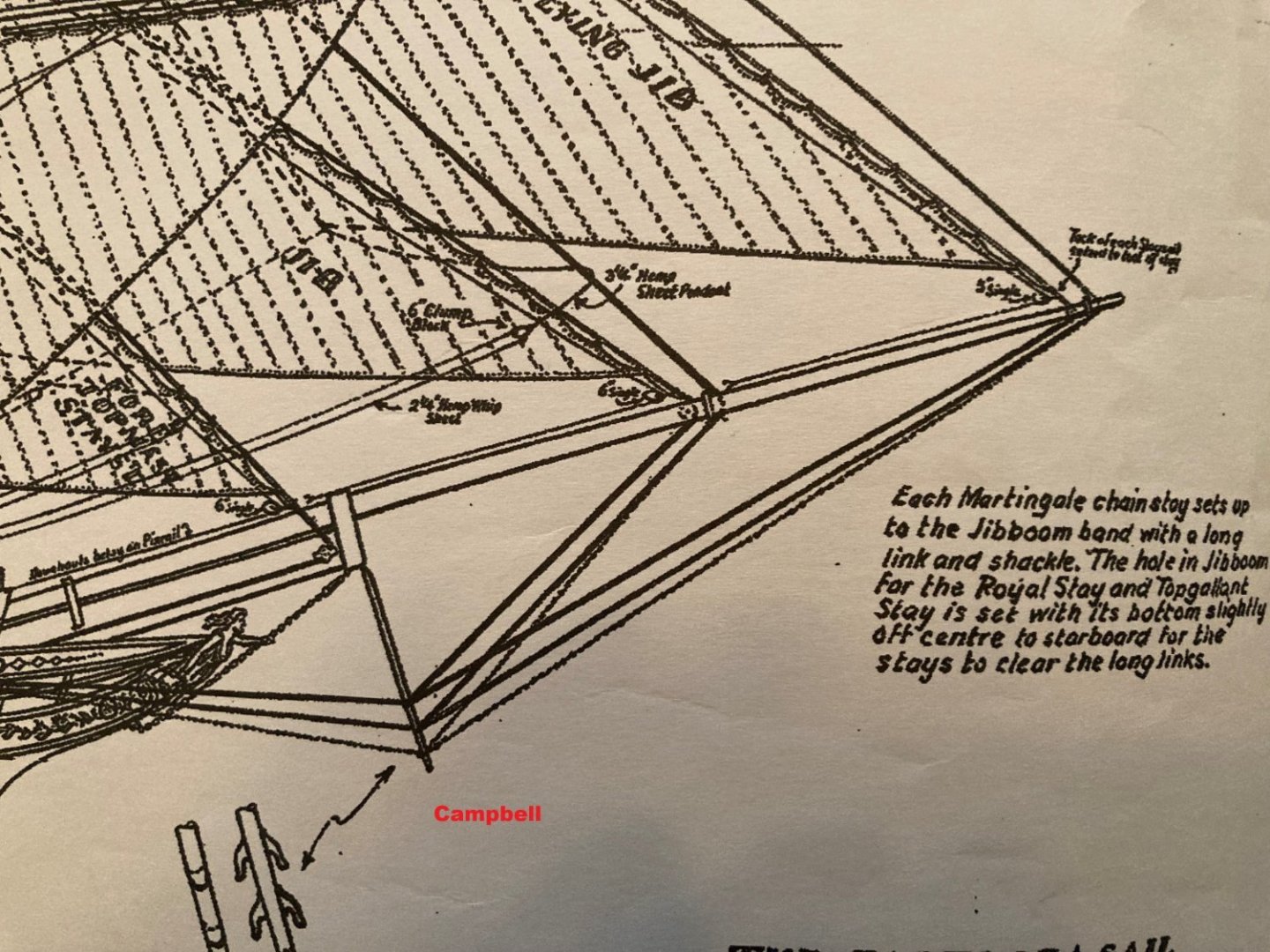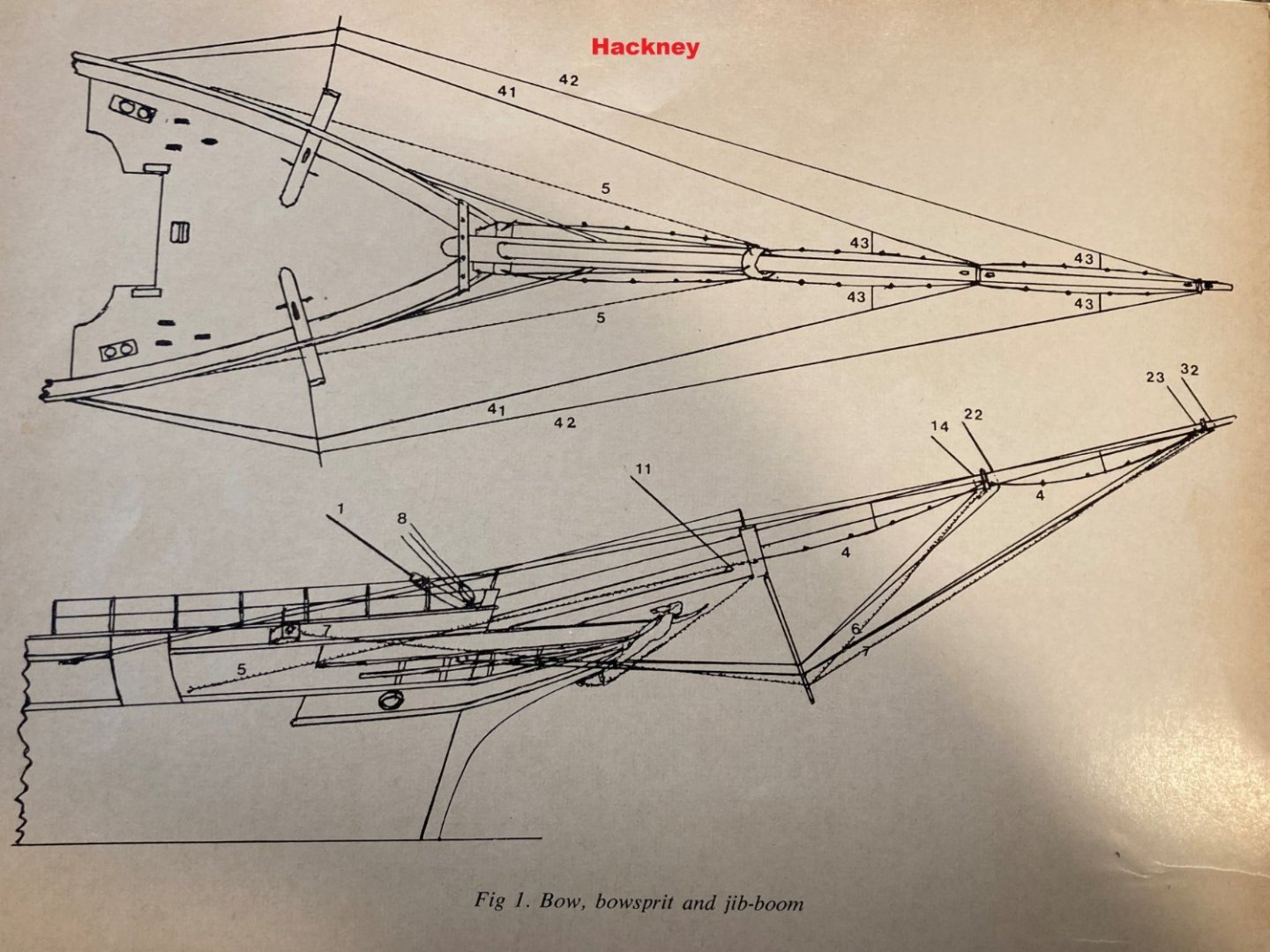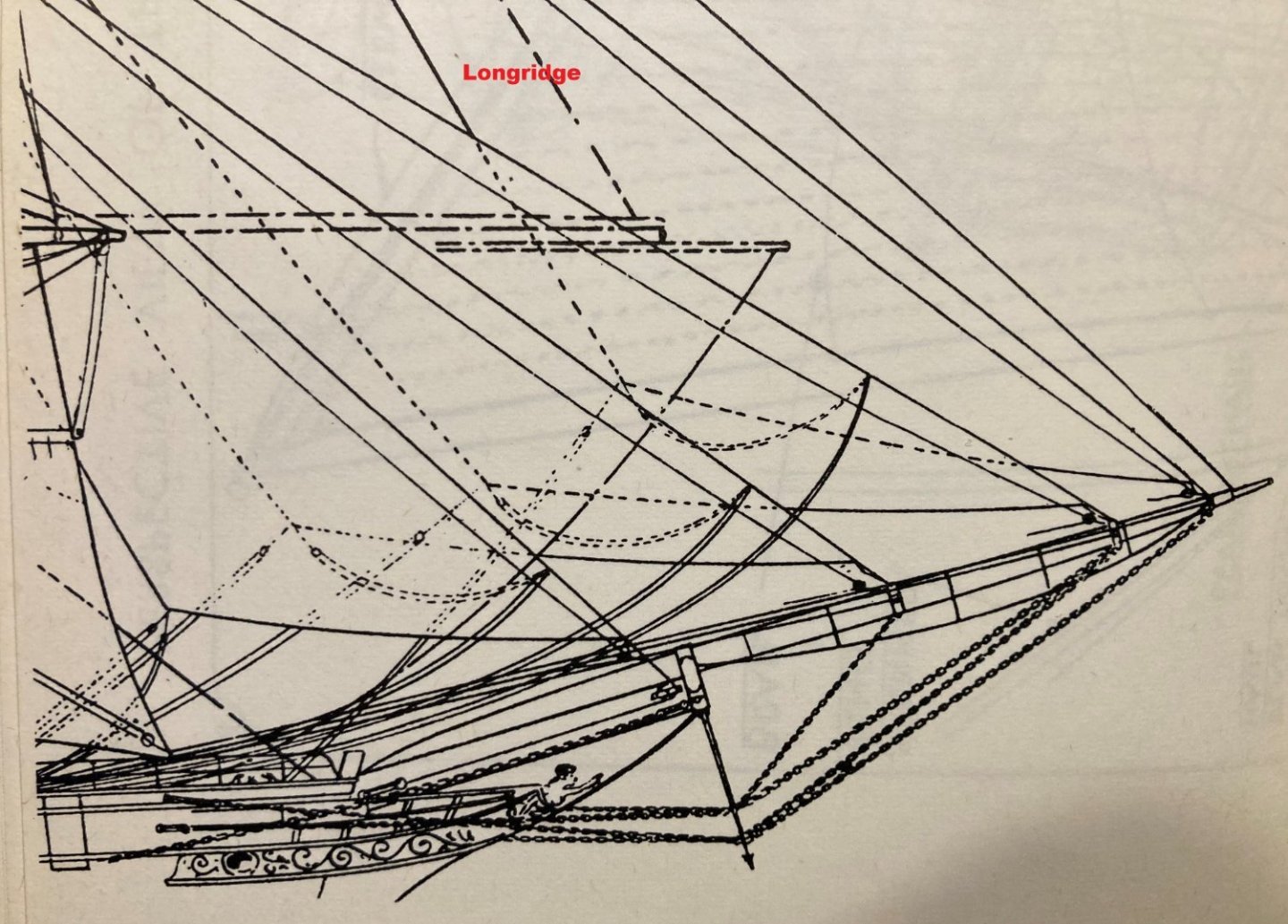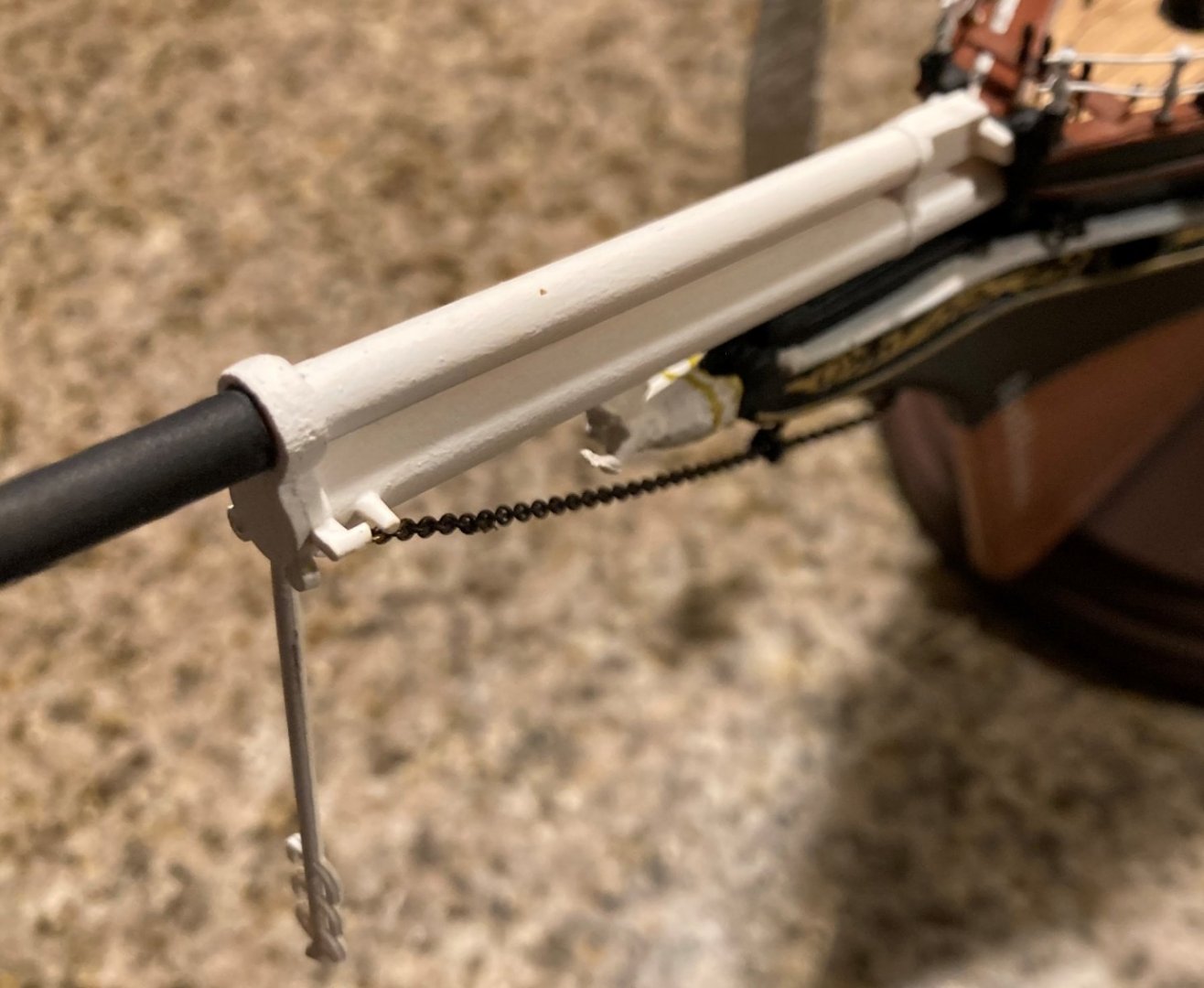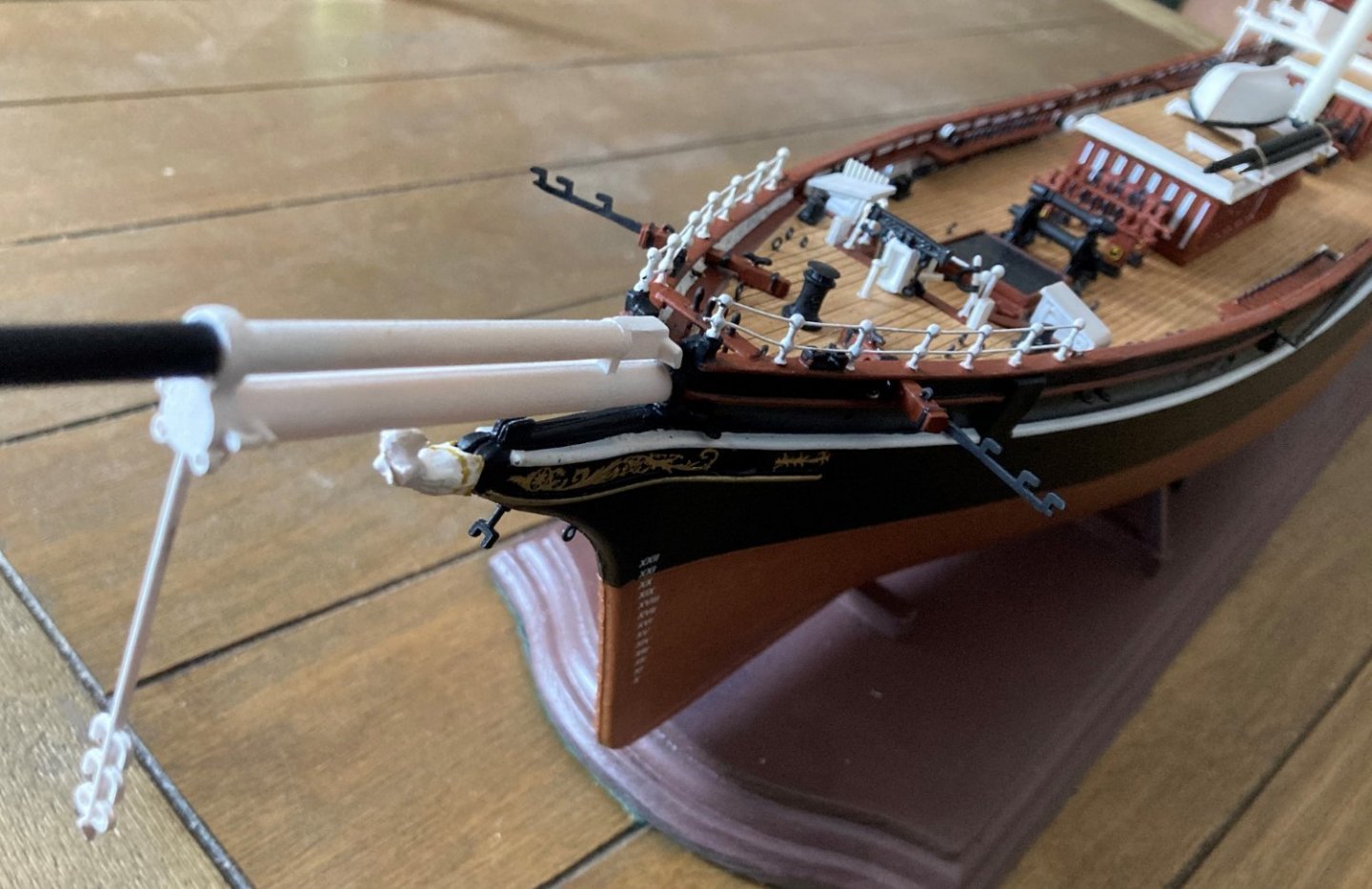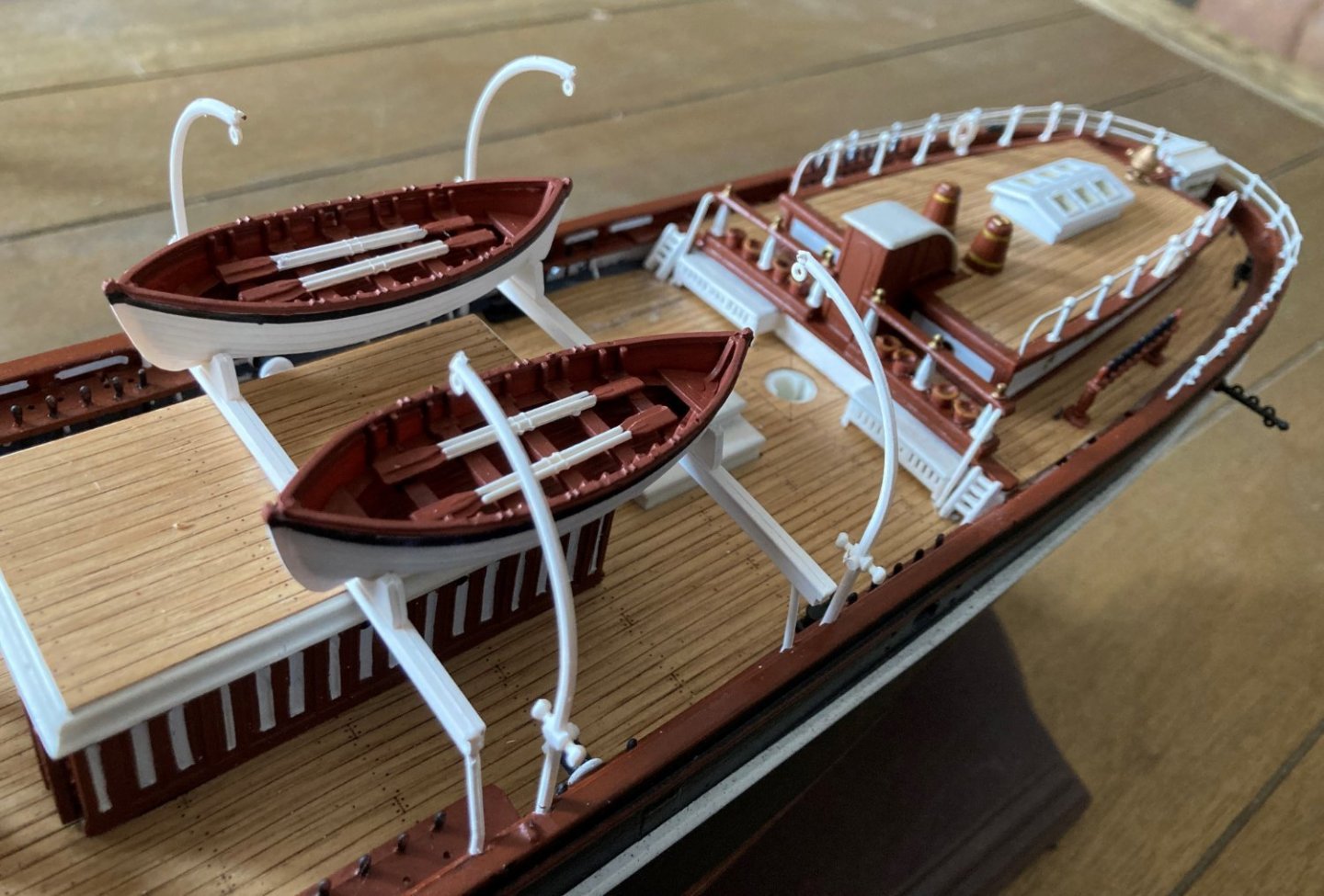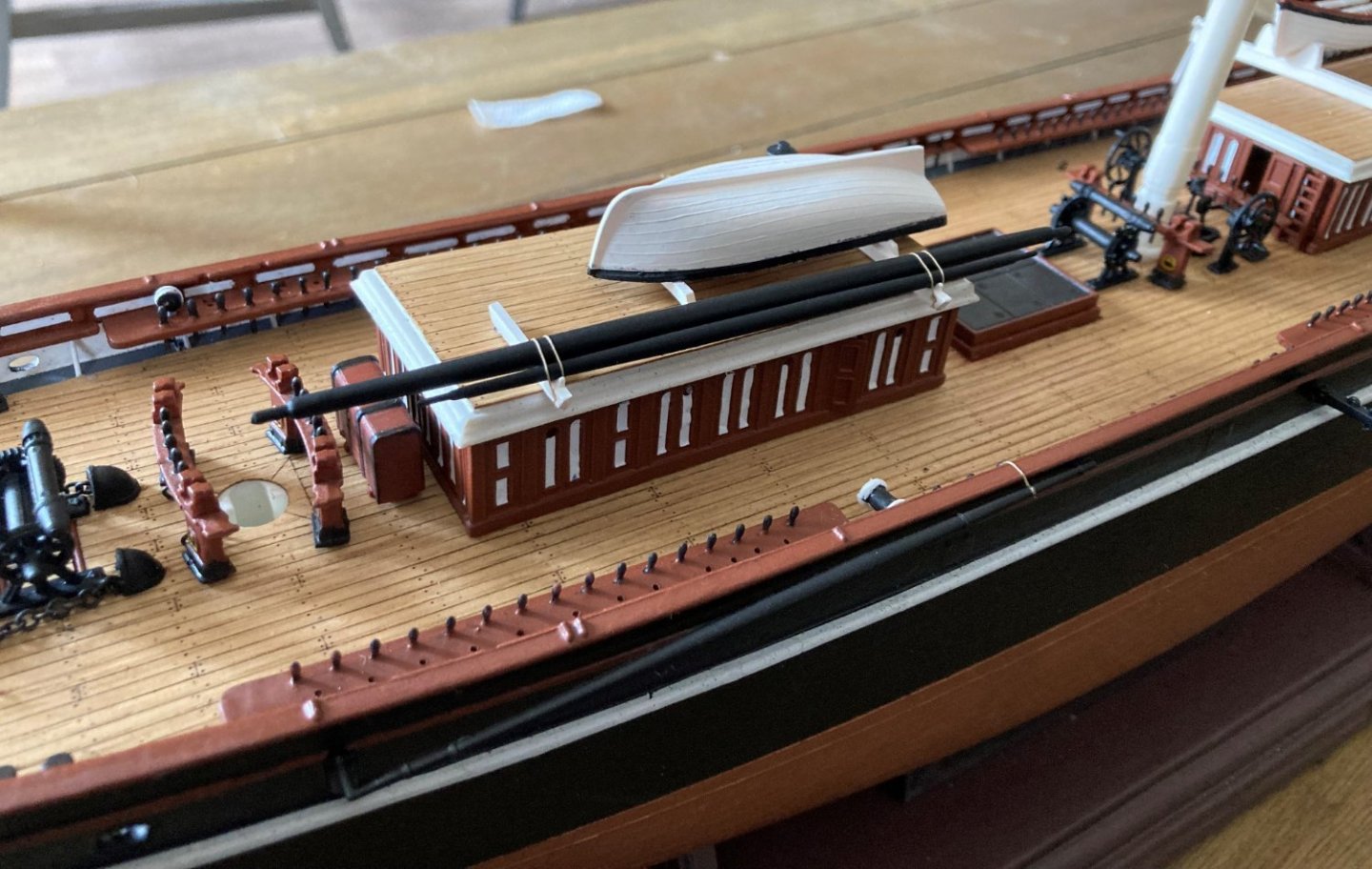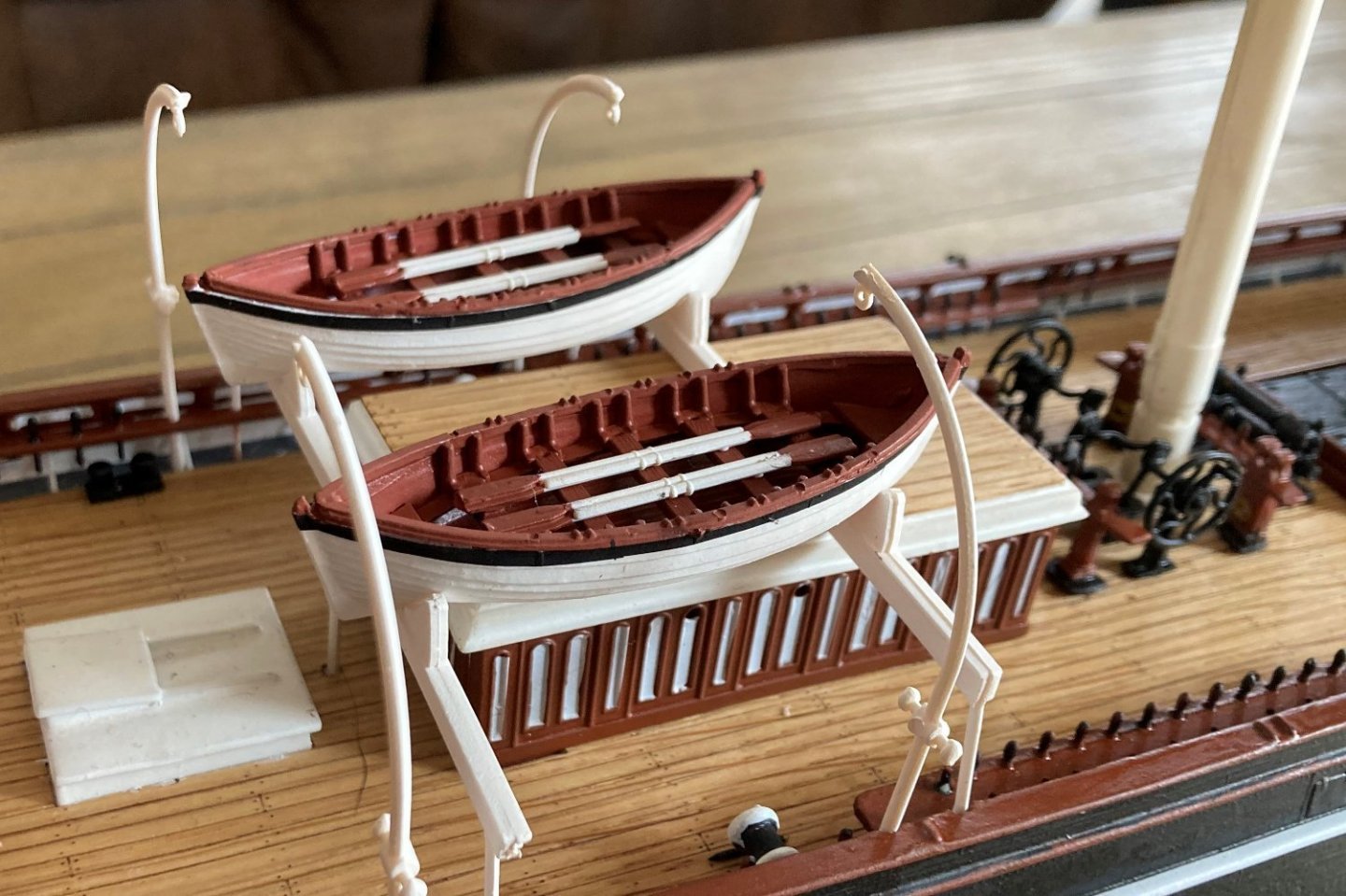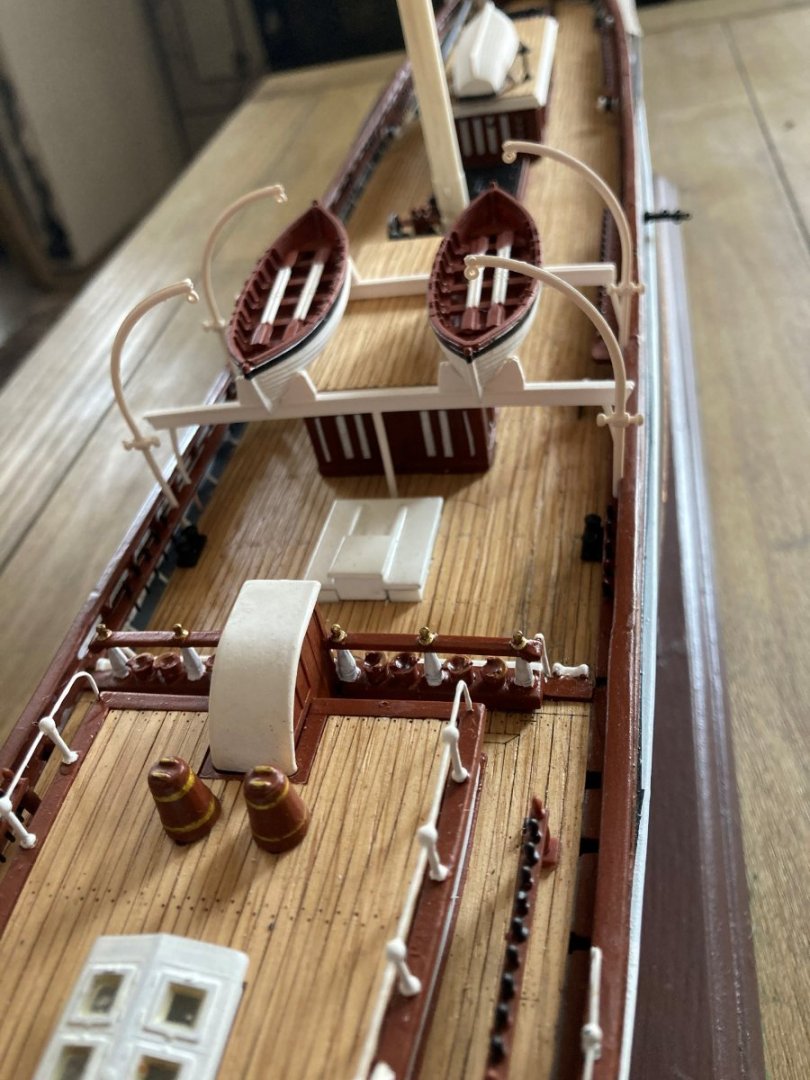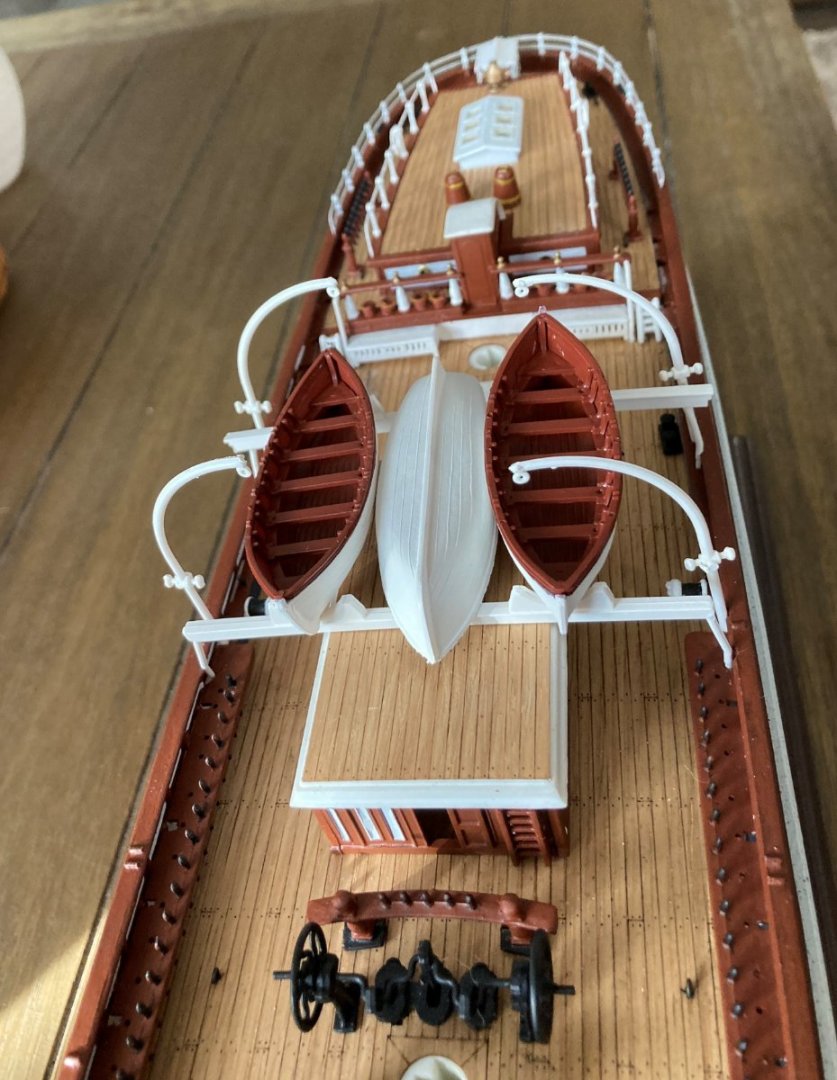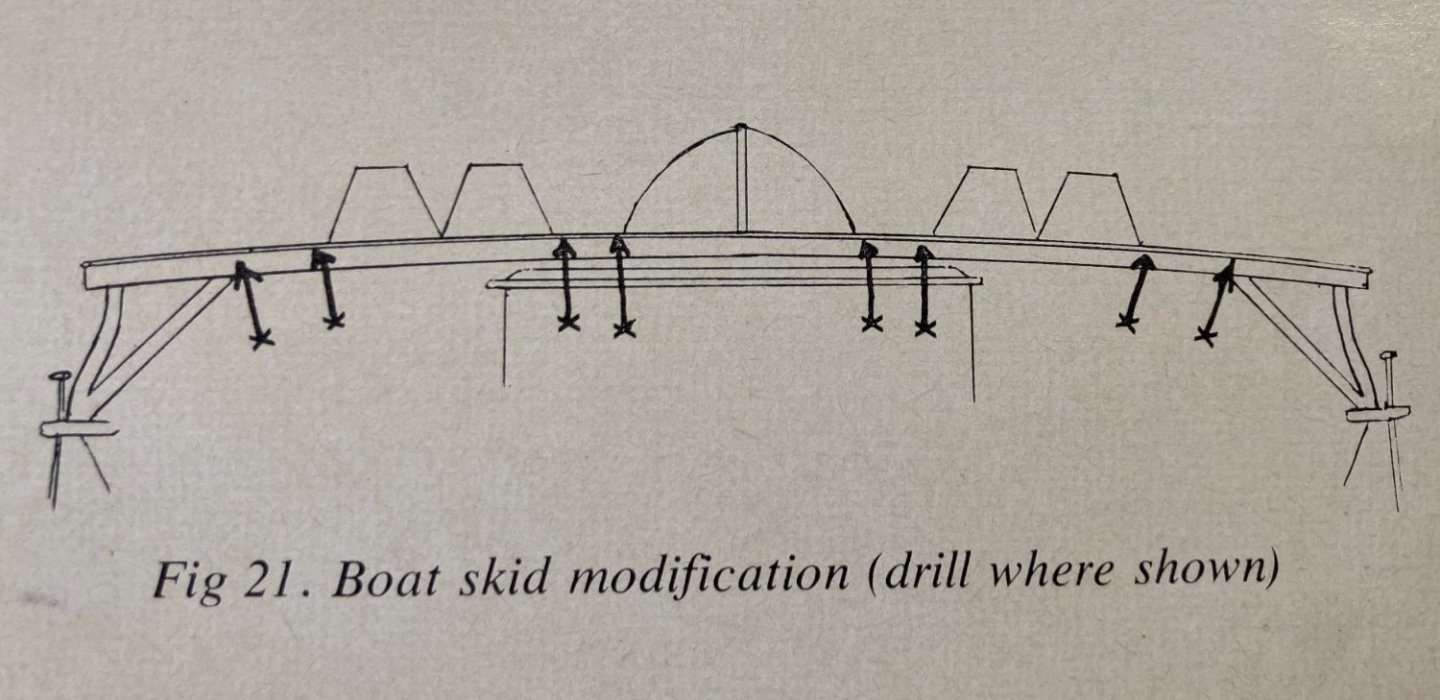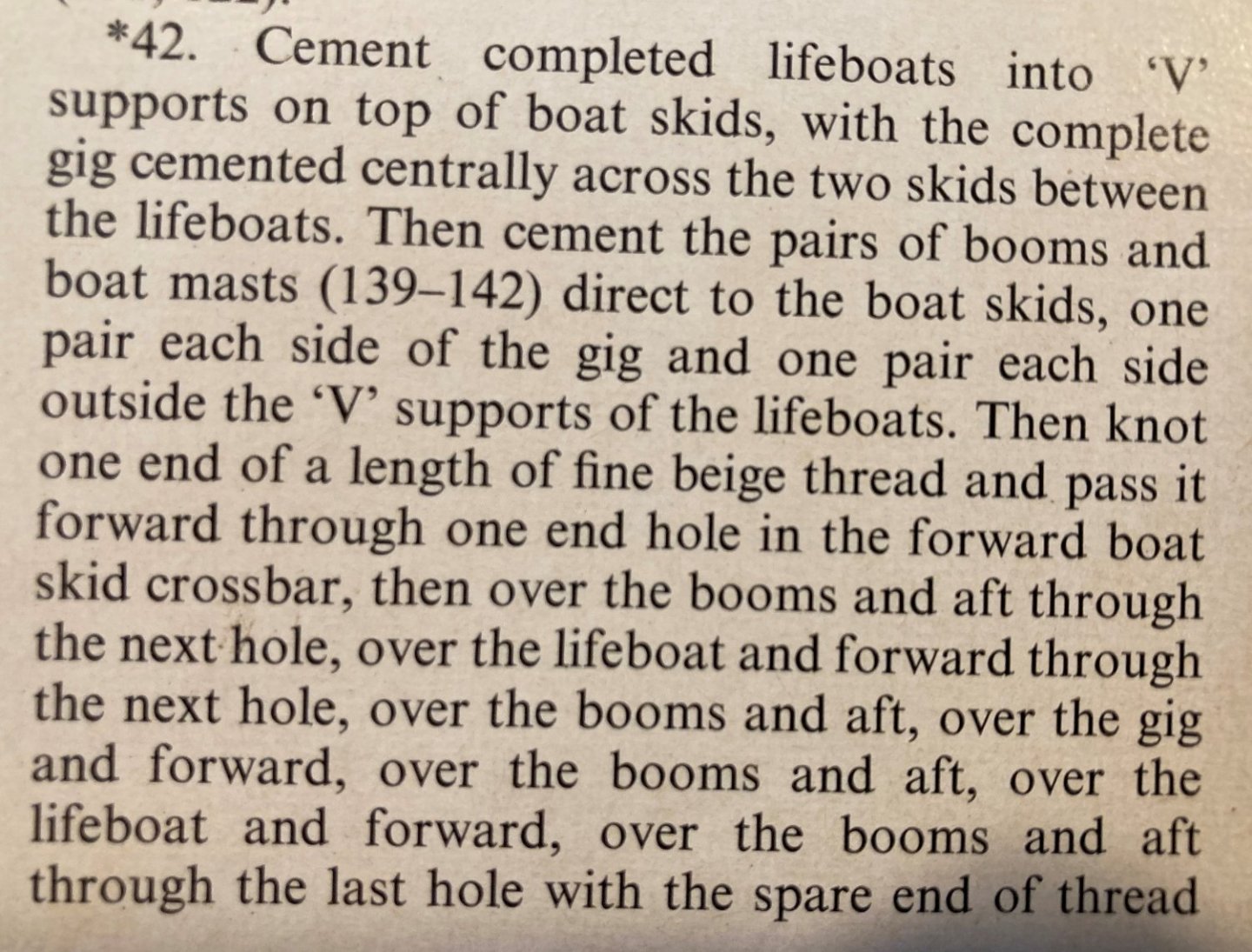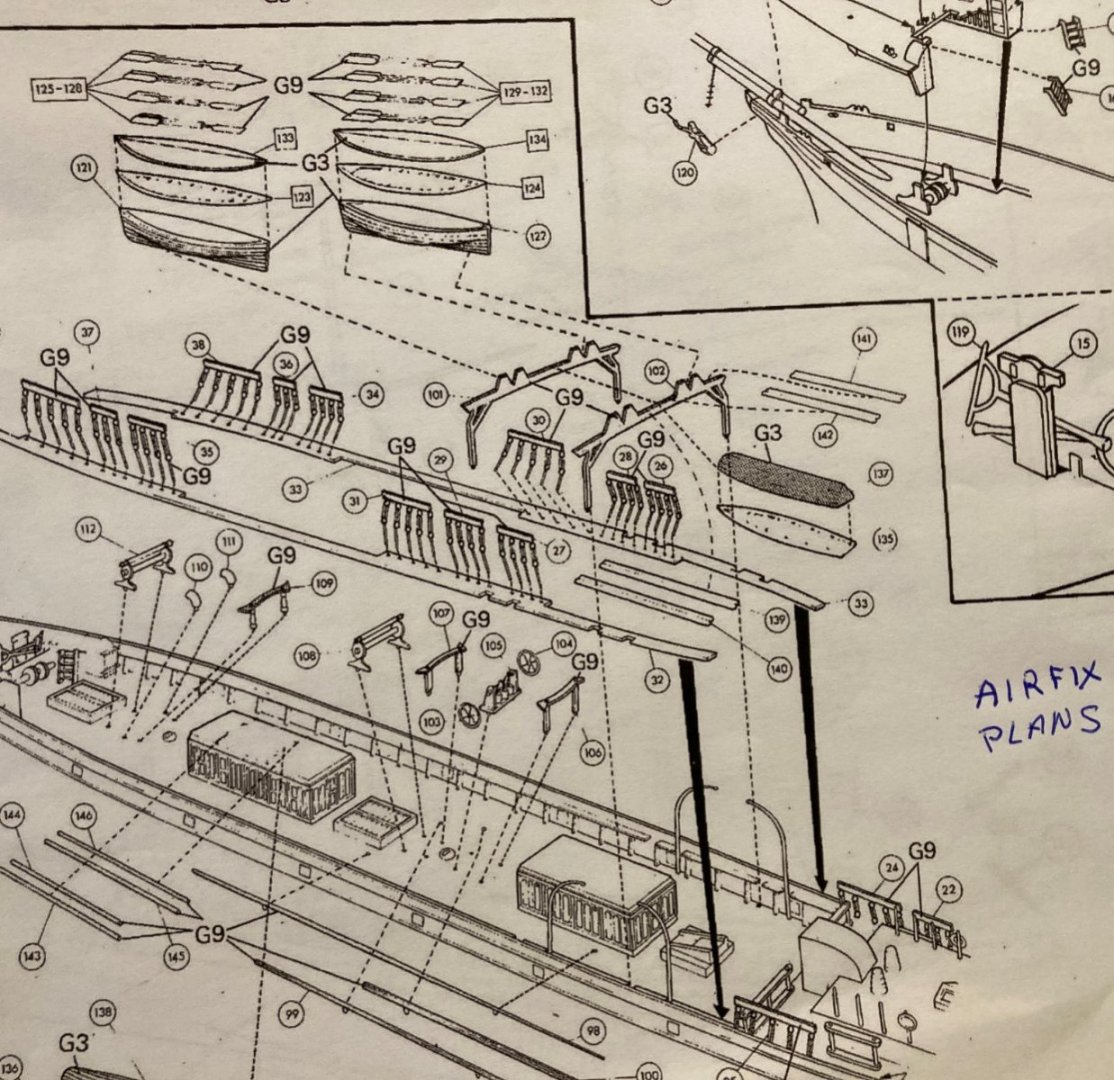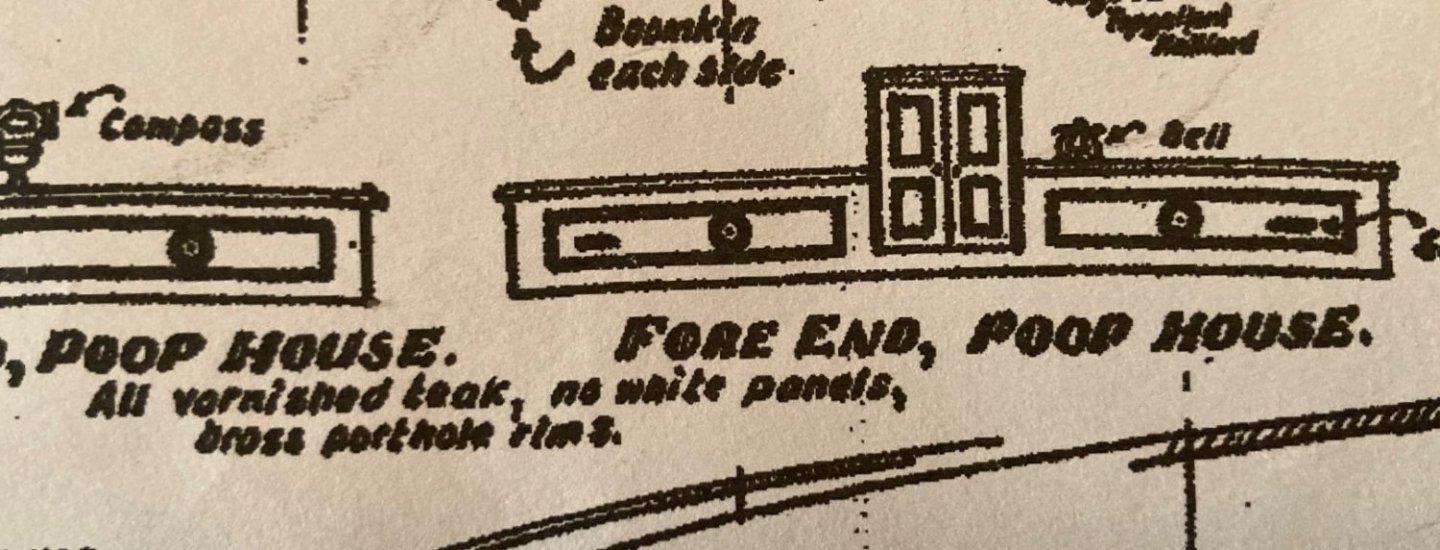-
Posts
615 -
Joined
-
Last visited
Content Type
Profiles
Forums
Gallery
Events
Everything posted by bcochran
-
Below is the download link to HisModel zip file of Cutty Sark plans. You can use your mouse to enlarge and read. They are free and very clear to read. They are Campbells plans. Each page is a type of running rigging or standing rigging. He has done the work for you of separating the type of rigging from Campbell's plan. HisModel has color coded the blocks and deadeyes which refer to the size of the block or dead eye and the size of rope used. Here is the download link: https://www.hismodel.com/_filemanager/download.php?Id=110
- 481 replies
-
- Cutty Sark
- Revell
-
(and 2 more)
Tagged with:
-
By the time we are done, we will have a whole list of Revell's Cutty Sark's inaccuracies. The downside of it is that I know of them. Since I am not going to change the kit that much, I'll have to live with them. It would be neat if some company would learn from us and remake the kit without all of them. (Kevin, you could make a set of 3D printed corrections and sell them on Shapeways.) The one that bugs me the most is the shallowness of the bullwarks. Having watched all the YouTube Cutty Sark videos, it is so evident when looking at the deck houses from outside the ship at that level. Revell's deck houses stick up too high. I also have looked at many Cutty Sark wood models (not scratch built ones) and they almost all look worse than Revell's. In an ad for Billing Boats' Cutty Sark, it says about the kit's fittings, "most are in perfect scale", meaning some aren't. In the next life, if I become an expert scratch builder ...............
- 444 replies
-
- Cutty Sark
- Revell
-
(and 2 more)
Tagged with:
-
I haven't used gel CA yet. I am going to Michael's or Hobby Lobby tomorrow to find some. If none there, I will look online. Since I have several sets of the etchings minus the stern decorations, I have lots to practice with.
- 481 replies
-
- Cutty Sark
- Revell
-
(and 2 more)
Tagged with:
-
- 481 replies
-
- Cutty Sark
- Revell
-
(and 2 more)
Tagged with:
-
I will be real happy if I complete my model with rigging and get it on a shelf somewhere under a protective enclosure. I never intended it to look like anything other than a plastic model. Any more work than I am putting in, and I would give up at some point down the road. I understand rigging is tedious and monotonous at times, but I look forward to learning how a sailing ship's gear worked. So rigging will be a learning experience for me. All my life, I kept busy learning new things. It's good brain exercise.
- 444 replies
-
- Cutty Sark
- Revell
-
(and 2 more)
Tagged with:
-
Yes, I glued the fife rails. I remember you saying how hard it is to rig around them, but I didn't pay attention.
- 481 replies
-
- Cutty Sark
- Revell
-
(and 2 more)
Tagged with:
-
The glue is white until it dries, then it is semi transparent or a milky gray like in my pictures. If it gets on the waterway, it is almost invisible.
- 481 replies
-
- Cutty Sark
- Revell
-
(and 2 more)
Tagged with:
-
- 481 replies
-
- Cutty Sark
- Revell
-
(and 2 more)
Tagged with:
-
There is something I didn't mention that I did with this model. There are several places where the deck and waterways do not meet, and a gap is left, mostly at the point of the forecastle deck, and the stern around the rear and sides of the poop deck. A few places of the main deck near the bow also needed filling. I filled the gaps with a bead of Elmer's white glue applied with a tooth pick. The result is the gap is filled, but isn't very noticeable. It does not draw your eye's attention like an open gap does. In the pictures, you can see the dark grayish dried glue which filled in the gaps. Sometimes a few applications were needed. On my USS Constitution model, I filled the gaps with strips of styrene and sanded them even with the waterways and deck. With the Cutty Sark I did not want to sand any of the wood deck overlay.
- 481 replies
-
- Cutty Sark
- Revell
-
(and 2 more)
Tagged with:
-
I have assembled all the ship's plastic parts except for anchors and trail boards, masts and spars. I am waiting for the bullseyes I ordered to rig the bow sprit and jib boom. When done, I'll add the anchor and trail board. Hismodel has sent me a replacement set of photo etch decorations. I need to add them to the trail boards, starboard side of the wheelhouse and the stern. I have no confidence in my ability to work with the etchings today. Maybe I'll have it soon. I'll work on the trail boards first, using Hismodel's methodology and the advice you all gave me here. So today I will begin assembling the masts and tops. I need to get a small vice to hold them in while working on them. I will use Bruma's log for ideas on building masts. Thanks Bruma. I'll never have your abilities, but I'll do what I can.
- 481 replies
-
- Cutty Sark
- Revell
-
(and 2 more)
Tagged with:
-
I am pretty pleased with my build so far. There are places where things got a bit messed up, but they aren't too noticeable. I just keep adding more parts as it takes shape. I ordered some bullseyes this morning, so rigging the bowsprit is on hold until they arrive. I got lucky and bought a copy of Longridge's book with the pocket in the back holding the large folded plans.
- 481 replies
-
- Cutty Sark
- Revell
-
(and 2 more)
Tagged with:
-
I think the Revell bumkins are very fragile. The instructions say to use thread to represent the chain that the real ship has attached to the bumkins. I could have used chain, but that would not have strengthened the piece. I used music wire, painted black, which is stiff, to make the bumkins more rigid and to represent the chain. It also will handle the tension of the running rigging attached to them.
- 481 replies
-
- Cutty Sark
- Revell
-
(and 2 more)
Tagged with:
-
I lashed the boats down. Probably not prototypical, but it's what I came up with. I looked around and didn't find any ideas, so I made my own. Lubbers who see my model will think I know what I am doing. I am not going to make boat covers, though they were on the real ship. I have not seen any really convincing way to make them that I'd be comfortable with.
- 481 replies
-
- Cutty Sark
- Revell
-
(and 2 more)
Tagged with:
-
My next work will be to rig the bowsprit and jib-boom. I have several references that I am going to try to read and compare. It is important to know what piece of rig you are working with, thus it is important to know their names. I show two sets of Revell instructions. The yellowed one is the oldest copyright in 1964 Venice, CA. The other is from 1987. The older one has the names, the newer one does not, but it gives the order to follow when rigging. I show the others I have. I find Revell easier to follow, but it has no dialog. Underhill and Hackney both have dialog. Hackney is written as instructions to follow. Underhill is more technical, which you have to apply to your model using your understanding of the text. Underhill's figure 8 is almost the same as Revell's plan. So my plan is to compare each. I will most likely follow Revell and Underhill. I completed the bob stay without bullseyes as Underhill shows. I think I'll do it over when my bullseyes arrive. I've had quite a few do overs since I started. I'm sure to have many more.
- 481 replies
-
- Cutty Sark
- Revell
-
(and 2 more)
Tagged with:
-
The boats, boat boom, bowsprit, jib boom, spare spars and all eyelets are complete. I need to start rigging the bowsprit. I ordered 3.5 and 2.5 bullseyes from Model Expo, so I'll wait on those to rig bowsprit.
- 481 replies
-
- Cutty Sark
- Revell
-
(and 2 more)
Tagged with:
-
I don't want to move the boat skids. So I think I will look for a picture of the actual boats and lashings.
- 481 replies
-
- Cutty Sark
- Revell
-
(and 2 more)
Tagged with:
-
Does anyone understand Hackney's description of how to tie down the boats? I have an extra boat and want to do this modification on my ship. I understand the drilling of holes in the boat skids, but weaving the ropes makes no sense to me. Airfix shows the booms parallel to the ship sides and Revell has the booms athwart the ship. Airfix also has boat masts which look like walkways to me. See Airfix instructions attached.
- 481 replies
-
- Cutty Sark
- Revell
-
(and 2 more)
Tagged with:
-
I read there was a change in size somewhere. The problem is I have read many references, I don't know which one has it.
- 481 replies
-
- Cutty Sark
- Revell
-
(and 2 more)
Tagged with:
-
- 481 replies
-
- Cutty Sark
- Revell
-
(and 2 more)
Tagged with:
-
I have been reading Underhill's book in preparation to work on rigging.
- 481 replies
-
- Cutty Sark
- Revell
-
(and 2 more)
Tagged with:
-
I remember there being disagreement on whether there were or were not two deck houses originally. I'll have to look up my source. IIRC the plans called for one, but two were built in what I read. I'll get the source for us. On Campbell's plans near the forecastle, he has "The original design was for 22 men as shown but with no after deck house. The latter existed in 1871, if not when launched, and it is likely that the forecastle accommodation was only partly used with spare bunks." The aft deck house was where the apprentices bunked along with the bosun, cook, sailmaker and carpenter. If it wasn't there, then they would have to bunk with the ABs in the forecastle I would imagine. The fore deck house had the galley and bunks for 12 seamen. I added my picture, so you can see how much I resemble the chap on the ship. That is Santa Barbara harbor behind me.
- 481 replies
-
- Cutty Sark
- Revell
-
(and 2 more)
Tagged with:
-
Kevin, You are very welcome to watch my build, but keep in mind I am a rank amateur when it comes to rigging. The thing I most worry about is breaking a mast or spar or jib-boom. At my age, my manual dexterity has diminished. You should see my hand shake when I try to touch up some tiny paint flaw. I like the looks of rigging, that gives me inspiration to go at it. I think I am going to use Revell's blocks painted black. I don't feel like stropping all those wooden blocks. In my mind's eye I can see my ship finished, but from this point in time it looks a long way off and a lot of trying times ahead. I hope I finish. One question I have for anyone who knows, how were the stays attached to the masts. Revell says to tie them at certain places. I doubt in reality they were tied to a mast. Also, I am going to do a harbor rig, so I think I should remove the rings round the mast where spars locate for a sail rig. The other thing that bugs me and I will have to live with it is that Revell's masts and spars represent the ship before they were cut down and Revell has a skysail where the cut down version did not. Also, the stun sail booms were gone during the wool voyages. My model, to me, represents a period after the cut down. I don't want to take the trouble to cut down the plastic masts and yards, and I don't want to make new ones. I feel I would not be accurate enough, even though we both agree the deck is too high and are living with that. I am going to use Revell's mast and yards as they are. Maybe old White Hat had painted deck house panels before he cut down the masts. If I finish and have the model sitting on a shelf under glass and my friends look at it, not a single one of them would be able to point to a discrepancy. It matters to me though to some extent. I have to balance accuracy to the work involved to correct, skills available, willingness to work at it and the odds that I'll do a good job. After hours and days and weeks into it I don't want to make a major screw up.
- 444 replies
-
- Cutty Sark
- Revell
-
(and 2 more)
Tagged with:
-
Hi Bruma, I want to thank you for all the inspiration I get from your build. Mine is a cut below what you are doing, but I also don't have your skill and patience either. Seems you, Kevin and I are having fun together, and I want to make sure I drop in on both of yours and Kevin's logs. I would not be where I am without you.
- 399 replies
-
- cutty sark
- revell
-
(and 2 more)
Tagged with:
-
The anchor chain when being taken in or out rode on the hawser reel and the windlass (using Revell terms) which would raise it above the hatch. Still any slack would drag on the hatch I would think. In all the pictures I have seen of Cutty Sark models, I think I could pick out any number of discrepancies. The wood models from kits (which seem to me to have a special reverence) are the worst.
- 481 replies
-
- Cutty Sark
- Revell
-
(and 2 more)
Tagged with:
About us
Modelshipworld - Advancing Ship Modeling through Research
SSL Secured
Your security is important for us so this Website is SSL-Secured
NRG Mailing Address
Nautical Research Guild
237 South Lincoln Street
Westmont IL, 60559-1917
Model Ship World ® and the MSW logo are Registered Trademarks, and belong to the Nautical Research Guild (United States Patent and Trademark Office: No. 6,929,264 & No. 6,929,274, registered Dec. 20, 2022)
Helpful Links
About the NRG
If you enjoy building ship models that are historically accurate as well as beautiful, then The Nautical Research Guild (NRG) is just right for you.
The Guild is a non-profit educational organization whose mission is to “Advance Ship Modeling Through Research”. We provide support to our members in their efforts to raise the quality of their model ships.
The Nautical Research Guild has published our world-renowned quarterly magazine, The Nautical Research Journal, since 1955. The pages of the Journal are full of articles by accomplished ship modelers who show you how they create those exquisite details on their models, and by maritime historians who show you the correct details to build. The Journal is available in both print and digital editions. Go to the NRG web site (www.thenrg.org) to download a complimentary digital copy of the Journal. The NRG also publishes plan sets, books and compilations of back issues of the Journal and the former Ships in Scale and Model Ship Builder magazines.





